

The 8 Fastest Cruising Catamarans (With Speedchart)
As an Amazon Associate, we earn from qualifying purchases. We may also earn commissions if you purchase products from other retailers after clicking on a link from our site.
Cruising catamarans are some of the most comfortable boats to roam the water, making them fantastic for both long-term voyages and short-term vacations. Still, cruising catamarans can be great racing boats, but just how fast can they go?
Some of the fastest cruising catamarans include the Gunboat 68 (35 knots), Outremer 45 (25 knots), ORC50 (25 knots), FastCat 435 (20 knots), TS 42 (35 knots), and Lagoon 440 (20 knots). Yet, there are many more cats that can reach 35 knots safely.
If you are interested in knowing about the fastest cruising catamarans, I have you covered. I will be discussing some of the most popular, fastest cruising catamarans and the features that make them so excellent for sailors in need of speed. You will learn more about each catamaran’s speed and amenities, and I will let you know a trick or two to maximize your speed under sail.
How Fast Are Cruising Catamarans?
On average, cruising catamarans can reach top speeds of 15 knots , around 17.3 mph (27.84 kph). However, some exceptional, racing-designed cruising catamarans can reach up to 30+ knots in the right wind conditions.
When you want to better understand catamaran hull characteristics, I suggest the book Catamarans a Complete Guide (amazon link) by the president of Aeroyacht catamarans and that you check out my article Why catamarans capsize .
Factors That Impact Speed
Weight & size.
When you consider a catamaran’s speed, you will need to keep in mind the boat’s weight and narrowness. A vessel that can travel at 15 knots will still move slower if the boat is heavy or has a wide, extensive hull. When increasing the total weight of the boat, the boat “sits” lower in the water, thus increasing water drag and reducing speed.
Why trimarans are faster than catamarans!
Now that we know how weight impacts sailing characteristics, it follows that; if you are planning on racing your catamaran, you should remove as much luggage or extra gear as possible. Eliminating as much weight as possible will help you travel at your cat’s maximum speed .
Narrow Hulls
The hydrodynamics of the ship will heavily affect your speed. Narrower boats can chop through the water with less effort, making slender ships with pointed hulls far faster than wide vessels. So if you are looking for the fastest one available, you should look for a slender hull.
Slim hulls vs. space is a common tradeoff for catamarans optimized for family sailing .
Wind will also affect your ship’s speed, so do not expect your cruising catamaran to reach the maximum speed without heavy wind. Generally, cruising catamarans have two large sails (at least) to power them through the water, and some are so efficient that they can travel even faster than the wind.
Although a strong wind is needed to energize the sails and move the boat, too much wind will instead make the sails less efficient, and maximum speed is most often attained at lower wind speeds but with flat water.
Light Weight Materials
Faster cruising catamarans are often made from carbon fiber materials and fiberglass to keep the weight down. If you are looking for the quickest catamaran that you can find, you should note the materials that the ship is made out of and try to get one that is primarily made from carbon, glass, and resin materials.
While you are looking for the perfect catamaran for you, you should keep in mind what you NEED and what is NICE with your ship. Usually, this decision is between size and speed, but some of these excellent vessels have both.
Lightweight materials are usually costly; for example, a carbon fiber mast will probably cost you +$20 000, depending on the cat’s size.
I have written a buyer’s guide that explains the concept of NEED vs. NICE , which will make choosing the right boat faster and more accurate.
Gunboat 68 (+35Kts)
Gunboat 68 is a cruising catamaran designed to reach the highest speeds possible. Made by Gunboat, the ship uses Grand-Prix racing boats’ designs to develop the speediest cruising catamaran on the market.
Gunboat 68 is made entirely from carbon composites, which keeps the ship lightweight and fast. Gunboat 68 is the perfect catamaran for anyone who wants to reach the highest speeds possible while maintaining control of the vessel and not bouncing around too much.
Gunboat 68 has comfortable, spacious living quarters, though it also has a spacious deck with luxurious seating. Indeed, this cat has it all, making it one of the best cruising catamarans for racers and casual sailors. The design maximizes all of the living spaces and uses lightweight materials to add elegance and luxury to a speedy racing catamaran.
Gunboat 68 is one of the fastest cruising cats out there, with its maximum speed at more than 30 knots . Gunboat 68 can achieve these fast speeds, thanks to its lightweight construction and narrow hull design.
Still, Gunboat can customize your ship’s plan to accommodate your needs. Whether you are looking for a faster, more lightweight boat with a more extensive sail or a more comfortable cruiser, Gunboat 68 is an excellent option for you.
Specifications
- Maximum Speed: 35 knots
- Length: 68 ft (20.75 m)
- Beam: 29.9 ft (9.1 m)
- Draft: 3.9 ft (1.2 m) board up and 9.84 ft (3.8 m) board down
- Displacement: 23.7 tonnes
TS 42 (ORC 42)
The TS, or Tres Simple , cruising catamarans, designed by Marsaudon Composites, are some of the fastest cruising catamarans in the world.
Marsaudon developed the ship’s plans using racing boats’ streamlined designs and combined them with a cruising catamaran’s comfortable living spaces. The TS 42 has an inverted hull which helps it glide on the water swiftly without requiring much fuel, but it also has a spacious below-deck area with plenty of luxuries.
TS cruising catamarans are often considered the fastest cruisers on the market, with their speed comfortably reaching upwards of 35 knots in the right wind conditions. Generally, TS catamarans can sail at 20 knots, even with moderate wind. They are the perfect catamaran for racers and high-speed travelers, and yet they still have the amenities of a pleasant live-in vessel.
The TS 42 has a large galley and comfortable cabins, making it a cozy home or vacation vessel. With multiple bathrooms, large windows, and open lounge spaces, these catamarans are superbly comfortable to live in.
The deck and cabin space are divided by a large, openable window, which adds extra light and ventilation to the living areas. It also has plenty of on-deck space, which is rare in such a small vessel with an inverted hull.
If you think I’m using too many confusing nautical terms, you’ll find all the answers on my Catamaran parts explained page .
- Length: 42.8 ft (13 m)
- Beam: 24.3 ft (7.4 m)
- Draft: 4.9 ft (1.5 m) with boards up and 7.5 ft (2.3 m) with boards down
- Displacement: 5.8 tonnes
Outremer 45
Based in France, Outremer (pronounced uutremeer 😉 ) designed their Outremer 45 to be a long-lasting cruising catamaran that sails smoothly at high speeds. The Outremer 45 can reach about 15 knots, but the most comfortable sailing speed is 10 knots. However, it can travel up to 25 knots in the right wind conditions, making it a quick ship with all of a perfect cruising catamaran’s luxuries.
It is made for durability from carbon, vinyl ester, and divinycell so that it can last many years without repairs. The Outremer 45 has a narrow hull, and it is designed to be as thin as possible to maximize speed and fuel efficiency. Outremer 45 still has comfortable living quarters with large windows and lounge spaces within the boat. Indeed, it sacrifices no comfort for speed.
In this article, I talk a lot about catamaran characteristics, both interior and exterior, if that’s something you want to better understand, then I recommend an article where I write about trade-offs in design choices .
The Outremer 45 was initially designed to be a boat that would last 50 or more years, and it excels in its durability. It has an open, uniquely expansive side deck and plenty of on-deck conveniences that make sailing a breeze in the ORC50.
With supreme safety features such as tall railings, slip-free grips on deck, and enclosed lounge spaces, it is one of the safest catamarans available (is safety your top concern? I wrote a list of the safest catamarans on the market).
- Maximum Speed: 25 knots
- Length: 48 ft (14.6 m)
- Beam: 23.3 ft (7.1 m)
- Draft: 3.3 ft (1 m) with boards up and 6.7 ft (2.04 m) with boards down
- Displacement: 8.2 to 11.1 tonnes
Marsaudon Composites ORC50
Marsaudon Composites designed the ORC50, or Ocean Rider Catamaran 50, with both speed and comfort in mind. The ORC50 can be used for cruising, but it is also a great racing boat that has been awarded honors from many races worldwide.
Marsaudon borrowed designs from racing skippers to plan the ORC50, bringing together a cruiser’s comfort with the speed of an award-winning racing boat.
This cruising catamaran is lightweight, which allows it to gain speed at a fast rate, but still has comfortable living quarters inside the boat. It has a rotating carbon mast, which helps to eliminate turbulence over the mainsail and therefore increasing sail efficiency and speed!
With strong winds, the ORC50 can reach up to 23 knots , making it extremely fast for a cruising catamaran. The ORC50 can easily reach speeds much faster than the wind speed, which is a unique quality of this fast, yet comfortable catamaran.
The ORC50 is an excellent long-term living ship with its many organizational compartments, expansive galley, and well-ventilated sleeping cabin. It also has plenty of couches and seating areas built into the boat, and its intuitive design adds plenty of comfort to the cruising catamaran without weighing down the ship.
- Length: 50 ft (15.23 m)
- Beam: 27 ft (8.2 m)
- Draft: 5.6 ft (1.7 m) with boards up and 8.9 ft (2.7 m) with boards down
- Displacement: 13 tonnes
FastCat 435
African Cat’s catamarans, including the FastCat 435, are designed for speed and racing. This ship is mainly composed of epoxy, fiberglass, and carbon components, making it very lightweight to ensure that it travels as swiftly as possible.
The FastCat 435 may be as light as possible, but it is durable enough to last for many years in the most extreme conditions.
The FastCat 435 has comfortable living quarters and well-designed comfort spaces so that you can get the most out of your trips. The FastCat also has a green hybrid design, and it uses primarily electric power, which can help you prolong your sailing and use less fuel.
I find solar-powered/electric cats pretty exciting, so much so that I wrote an entire article called The Best Solar-Powered Catamarans on the subject.
The FastCat is an excellent option for anyone who wants a smaller cat with a comfortable design and incredible speed. FastCat’s electric power is also a unique, favorable feature for anyone who wants to use less fuel.
- Maximum Speed: 20 knots
- Length: 42.7 ft (13 m)
- Beam: 24.4 ft (7.4 m)
- Draft: 3.9 ft (1.2 m) with boards up
- Displacement: 2.4 tonnes
The Lagoon 440 cruising catamaran, like the FastCat, has an electric powering version, which cuts down on fossil fuel usage and ensures that your ship will keep moving. The Lagoon 440 is also among the easiest catamarans to maneuver, thanks to its electric drivetrain and automatic engines.
The speed of the Lagoon 440 usually maxes out at 10 knots with low winds, but with higher winds, it can quickly gain speeds up to 20 knots (some argue even higher, but I’m doubtful). The Lagoon 440 is an excellent cruiser and comfortable catamaran, but it is not an all-out racing cat.
Lagoon is a well-known brand, but there are some caveats, and are Lagoons still making good catamarans?
Below the deck, the living spaces in the Lagoon 440 are magnificent. The ceilings are high, allowing the tallest of passengers to stand in the cabin. The many storage compartments and furnishings have a modern, elegant design. The interior is one large primary cabin with a few private spaces below the deck.
- Length: 44.6 ft (13.6 m)
- Beam: 25.3 ft (7.7 m)
- Draft: 4.3 ft (1.3 m)
- Displacement: 10.5 tonnes
Fountaine Pajot Astréa 42
Fountaine Pajot designs some of the most luxurious yet speedy cruising catamarans available in the world. They are renowned for their safe, durable designs that make sailing a comfortable, relaxing experience. And on a personal note, i think the name sounds beautiful!
Their cruising catamarans use an inverted hull design that has become a signature mark of Fountaine Pajot vessels. This hull type allows the water to pass beneath the ship quickly, which increases the speed and fuel efficiency of the cat.
The Astréa 42’s primary benefit is its spacious, comfortable living quarters and large, open deck spaces. The ship’s interior spaces have large windows, large lounging areas, and plenty of storage compartments.
The cabin’s ventilation is also excellent, which reduces the classic musty smells of sea living. You can also get two different models of this catamaran, either in a one-cabin option or a two-cabin option, making it an excellent vessel for larger or smaller families.
The Astréa is ideal for long-term sea living and family vacations (it is not as fast as some more racing-oriented cats). Although the Astréa is not the speediest cat available, with its speed maxing out at about 10+ knots, even in favorable wind conditions, its luxurious atmosphere and comfortable cabin spaces make up for its relatively slow speed.
Don’t get me wrong, despite its lower speed compared to the boats on this list, the Astréa 42 can still get you places quicker than many other cruising catamarans (and most monohulls). So, if you want all of the elegance and comfort of a cat and are not too worried about racing, this ship is an excellent option for you.
- Maximum Speed: 10 knots
- Length: 41.3 ft (12.6 m)
- Beam: 23.6 ft (7.2 m)
- Draft: 4.1 ft (1.3 m)
- Displacement: 12.3 tonnes
Privilege Signature 510
The Privilege Signature 510 is a long-distance cruising catamaran designed for long-term voyages and sailing in extreme weather conditions. It features a durable, weatherproof design that will protect you from rainy and cold weather while sailing.
The helm and living spaces are completely covered, making it safe to live in, even in cold or stormy weather. It also has an automatic sail adjustment system with the controls at the helm, allowing you to make any adjustments from the helm’s safety and comfort.
Privilege Signature 510 also has an elegant, well-designed living space with plenty of amenities, including an accelerated cooling system, a spacious bathroom and kitchen, and plenty of windows for natural lighting.
With an elegant floor plan, this cozy ship is perfect for long-term living.
The Privilege Signature is not the fastest catamaran on the market, with a maximum speed of around 13 knots. Still, it is one of the quicker cats considering its elaborate amenities and comfortable size.
- Maximum Speed: 13 knots
- Length: 50 ft (15.24 m)
- Beam: 26 ft (7.98 m)
- Draft: 5 ft (1.57 m)
- Displacement: 25 tonnes
Although cruising catamarans are great boats for slowly cruising along the water, they can also be swift, substantial racing boats that reach speeds of up to 35 knots. These speedy cruising catamarans still come with all of the amenities of leisure boats, but they also reach incredible speeds without rocking or tossing.
Owner of CatamaranFreedom.com. A minimalist that has lived in a caravan in Sweden, 35ft Monohull in the Bahamas, and right now in his self-built Van. He just started the next adventure, to circumnavigate the world on a Catamaran!
Leave a Reply Cancel reply
Your email address will not be published. Required fields are marked *
Save my name and email in this browser for the next time I comment.
Recent Posts
Must-Have Boat Gear for Catamaran Sailors!
Sailing is probably the most gear-intensive activity I've ever done; there are so many decisions to be made about what gear to buy now, for tomorrow, and what to definitely never buy. The gear on...
6 Best Trailerable Trimarans For Bluewater and Coastal Sailing
Having a boat costs a lot of money, even when you are not using it, marina fees, etc. And once it is in the water most sailors never go very far from their "home marina" and sailing will be somewhat...
- THE PRINCESS PASSPORT
- Email Newsletter
- Yacht Walkthroughs
- Destinations
- Electronics
- Best Marine Electronics & Technology
- Boating Safety
The Power Catamaran Compilation
- By Yachting Staff
- Updated: December 21, 2018
Power Catamarans have been growing leaps and bounds in popularity, and, in lengths and widths. And for good reason. These cruise-centric yachts offer homelike livability for avid travelers, are fuel efficient and are fairly intuitive to run. Power cats are popular in the bareboat charter market too, for these very reasons.
Here, we take a look at 12 catamarans ranging from a cruising-couple-size 36-footer to a 78-footer for friends, family and some more friends. And there are myriad power options: outboards, diesel inboards, hybrid or even all-solar power.
Fountaine Pajot MY44
The Fountaine Pajot MY44 , a creation of Italian architect Pierangelo Andreani and French designer Daniel Andrieu, has a main deck that’s open from the aft-deck seating all the way forward to the starboard helm station. The sense of spaciousness is significant, for several reasons. First, four glass panels aft can all slide to port, creating an indoor-outdoor space with the aft deck and salon. In the salon, 32-inch-high windows extend for 12 feet down the sides of the yacht, with three sections per side, bringing in natural light along with the three forward panes that comprise the windshield. Finally, 6-foot-6-inch headroom provides vertical clearance, with a 21-foot-7-inch beam that adds interior roominess while keeping the yacht stable.
Read more: Fountaine Pajot MY44
Silent-Yachts 55
The ideas about which solar panels, electric motors, inverters and the like to use — and more importantly, Michael Köhler says, how to configure them — became the basis for the brand Silent-Yachts. The company offers 55-, 64- and 79-foot catamarans that run on solar-electric propulsion. The Silent 55 premiered this fall, and the 64 is sold out for the next two years, Köhler says.
Read more: Silent 55
Horizon PC74
As founder and director of The Powercat Company, a Horizon Power Catamarans distributor, Stuart Hegerstrom had long believed that catamaran builders needed to design their yachts to more stylish standards.
“The boats were very boxy,” he says, based on his years of experience with cats in the charter market. He and his partner, Richard Ford, asked Horizon to produce models that had high-end finishes and looked good inside and out.
The Horizon team brought in mega-yacht designer JC Espinosa to work with its own craftsmen. The result aboard the Horizon PC74 is a catamaran with exterior styling, layout and functionality that should appeal to private and charter owners alike.
Read more: Horizon PC74
The Aquila 36 is a departure from her sisterships in that she is an outboard-powered, express-cruiser-style catamaran, but she also adheres to MarineMax’s philosophies.
With a single main living level from bow to stern and a beam of 14 feet 7 inches, the Aquila 36 is like a bowrider on steroids. She has seating that can handle 20 adults for outings and barbecues, and there are two staterooms below, one in each hull, for family weekending. The staterooms have nearly queen-size berths, en suite heads, stowage and 6-foot-6-inch headroom.
Read more: Aquila 36
Lagoon Seventy 8 Powercat
Lagoon is a division of Groupe Beneteau, the world’s largest builder of sailing yachts, and the Lagoon Seventy 8 Powercat is a developmental sistership of its Seventy 7 super sailing cat. The Seventy series yachts are built at Construction Navale Bordeaux in France, which had to add a new yard to construct these catamarans because they require separate stern molds for the power and sail versions.
Read more: Lagoon Seventy 8 Powercat
Horizon PC60
To understand the Horizon PC60 power catamaran , you need to put aside preconceived notions about midsize yacht amenities. For example, main-deck master suites are the province of yachts over 100 feet length overall. Incorrect. This 60-footer has an elegant and spacious owner’s stateroom on the same level as the salon. If you want a 14-foot center console tender on a 60-foot yacht, you have to tow it. Wrong again. On the PC60, you hoist it onto the upper deck, no problem.
Read more: Horizon PC60
40 Open Sunreef Power
Sunreef is known for pushing the boundaries of catamaran design, incorporating four adjustable hydrofoils into a twin-hulled speedboat.
The Polish builder is one of several European builders (including Evo, Fjord, Wider and Wally) transforming the open day-boat category with creative designs. Beyond its hydrofoils, the 40 Open Sunreef Power ‘s cockpit has side “wings” along the aft gunwales that fold out at anchor, widening the beam from 17 feet to 22 feet 9 inches.
Read more: 40 Open Sunreef Power
Sunreef 50 Amber Limited Edition
Sunreef Yachts introduced its 50 Amber Limited Edition , with plans to launch just 10 hulls of the exclusive design.
The Sunreef 50 Amber Limited Edition will have a carbon fiber mast and boom, four layout options and numerous amber-colored elements, including the hull.
Read more: Sunreef 50 Amber Limited Edition
Lagoon 630 Motor Yacht
Fitted with the optional twin 300-horsepower Volvo Penta D4 diesels, the Lagoon 630 MY burns only 1.64 gph total at 6 knots, giving a theoretical range of 2,952 nautical miles with standard tankage of 793 gallons. Hull No. 1 had an optional 502-gallon tank, giving it transatlantic range.
Luxury, stability and economy are all hallmarks of Lagoon’s return to luxury motor yachts. If you can take a ride, it will be worth your time.
Read more: Lagoon 630 Motor Yacht
Fountaine Pajot MY 37
The Fountaine Pajot MY 37 easily accommodates the seafaring family with three- and four-stateroom options. In the three-cabin version, called Maestro, you’ll find an owner’s suite in the portside hull with a queen-size berth and en suite head. Two double-berth cabins and one more head are available for the kids. If your brood is bigger, the Quator setup features four double cabins with two heads.
The 37 is a traveler and can be powered with twin 150 hp or 220 hp Volvo Penta diesels. Top speed with the smaller engines is 17 knots, while it’s 20 knots with the bigger power plants. Interestingly, at 7 knots, the fuel consumption is the same, with either set of motors offering voyagers a 1 ,000-nm range.
Read more: Fountaine Pajot MY 37
Solarwave 64
Many yachts boast eco chops because they have a handful of solar panels that power the microwave or navigation lights. The Solarwave 64 , launched last summer, has the potential to run on sunshine alone. The vessel’s 42 solar panels generate 15 kW that are stored in batteries weighing about 1,300 pounds. They connect to electric motors.
Read more: Solarwave 64
Glider SS18
This British builder says it strives for design innovation and the Glider SS18 displays that DNA, the result of 8 years of research and development. She has a head-turning, catamaran hull form constructed from aluminum and composite materials. She is 60 feet LOA with a 17-foot beam, and has a relatively shallow 1-foot draft. Powered by quad Yamaha 300 hp outboards, she can reportedly reach 50 knots, and with her Stability Control System (SCS), should give a smooth ride while doing it.
Read more: Glider SS18
- More: aquila , Aquila Boats , Express and Flybridge Cruisers , Fountain Pajot , Glider Yachts , Horizon Power Catamarans , Lagoon , Power Catamarans , Silent-Yachts , Sunreef , Yachts
- More Yachts
New Shipyards for Sirena and Sunreef
Tankoa introduces 230-foot milano, new flagship for bering yachts: the b165, power catamaran popularity rising, lowrance unveils the eagle, for sale: 2005 grand banks 49 eastbay hx, for sale: 2006 marlow 72e long range cruiser, the family sailboat.
- Digital Edition
- Customer Service
- Privacy Policy
- Email Newsletters
- Cruising World
- Sailing World
- Salt Water Sportsman
- Sport Fishing
- Wakeboarding

Skater Powerboats

Racing Pedigree
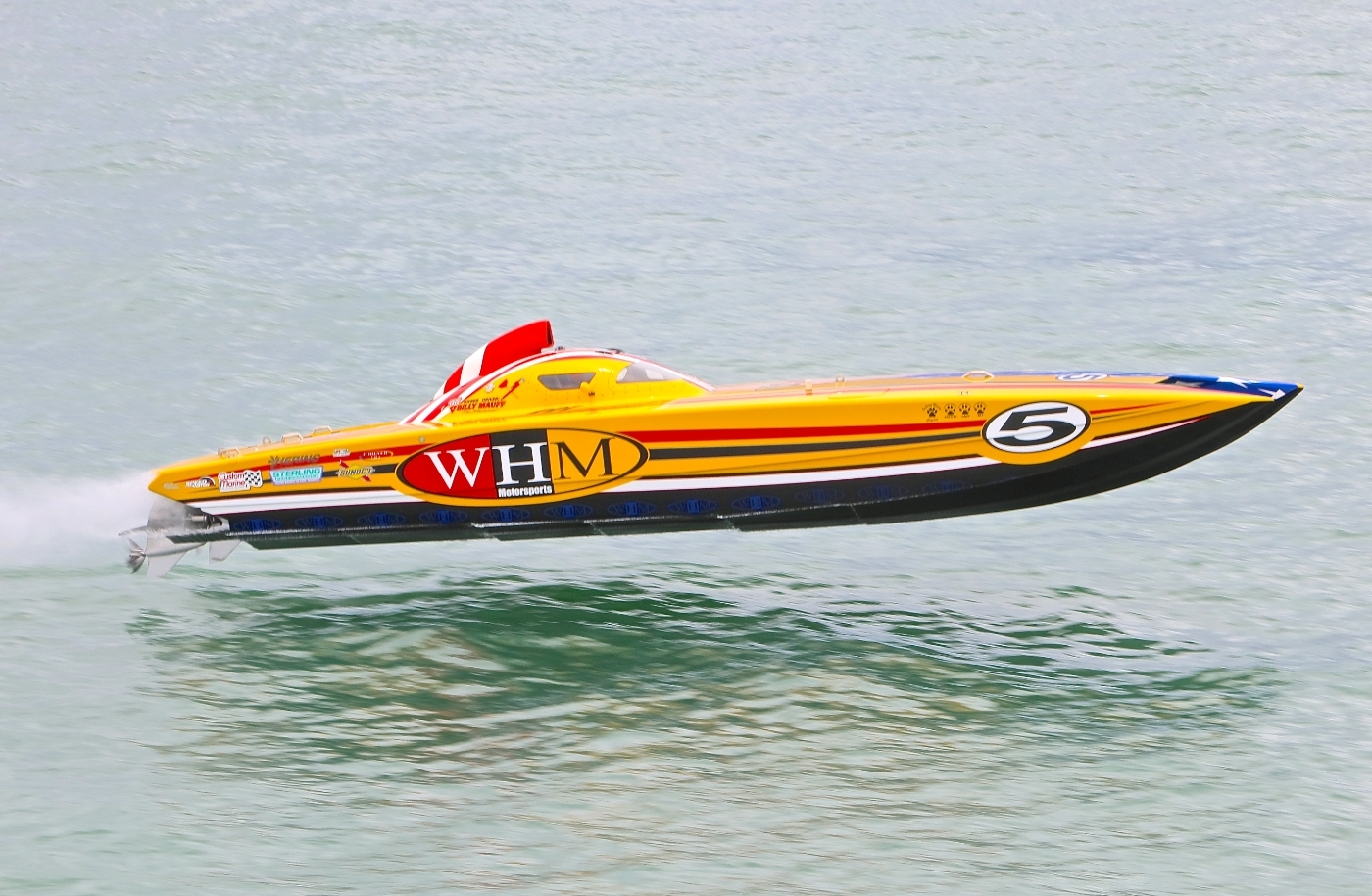
Founded in 1974
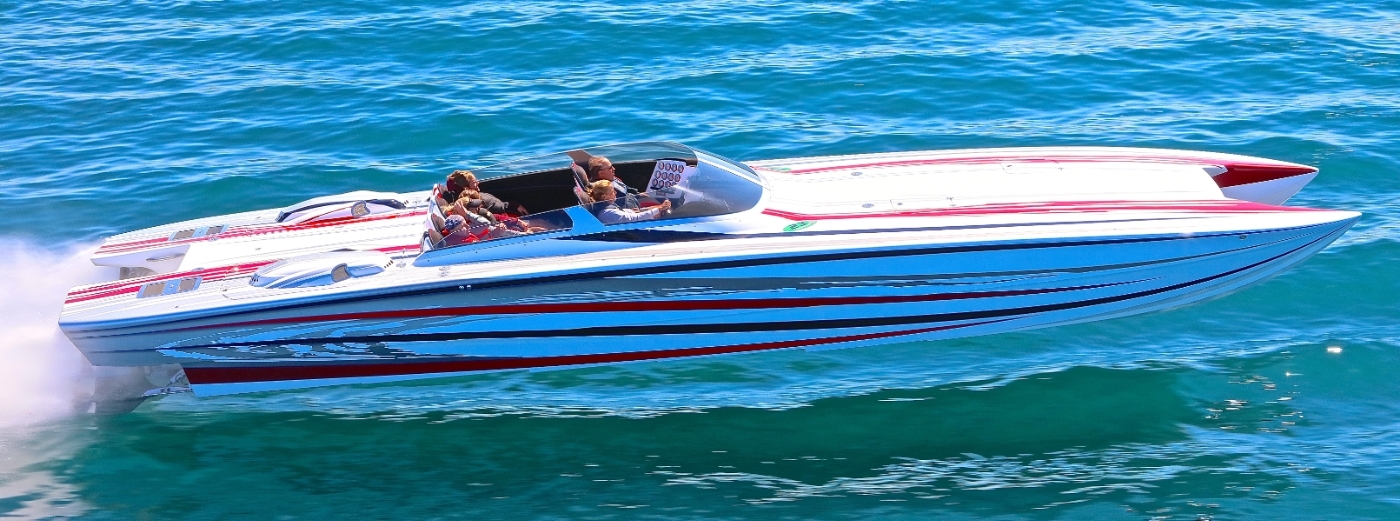
Flexible Design and Power
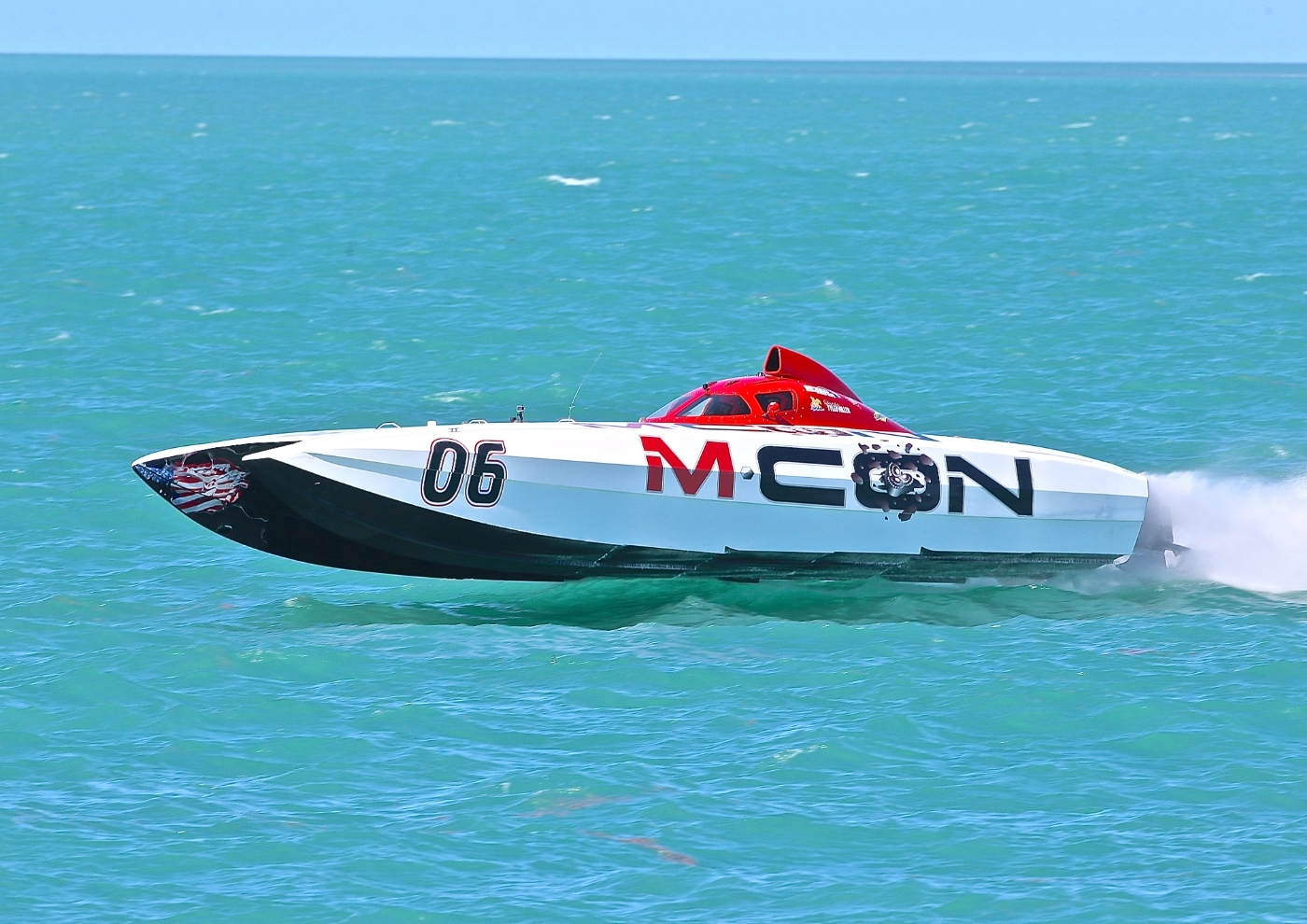
Fully Custom
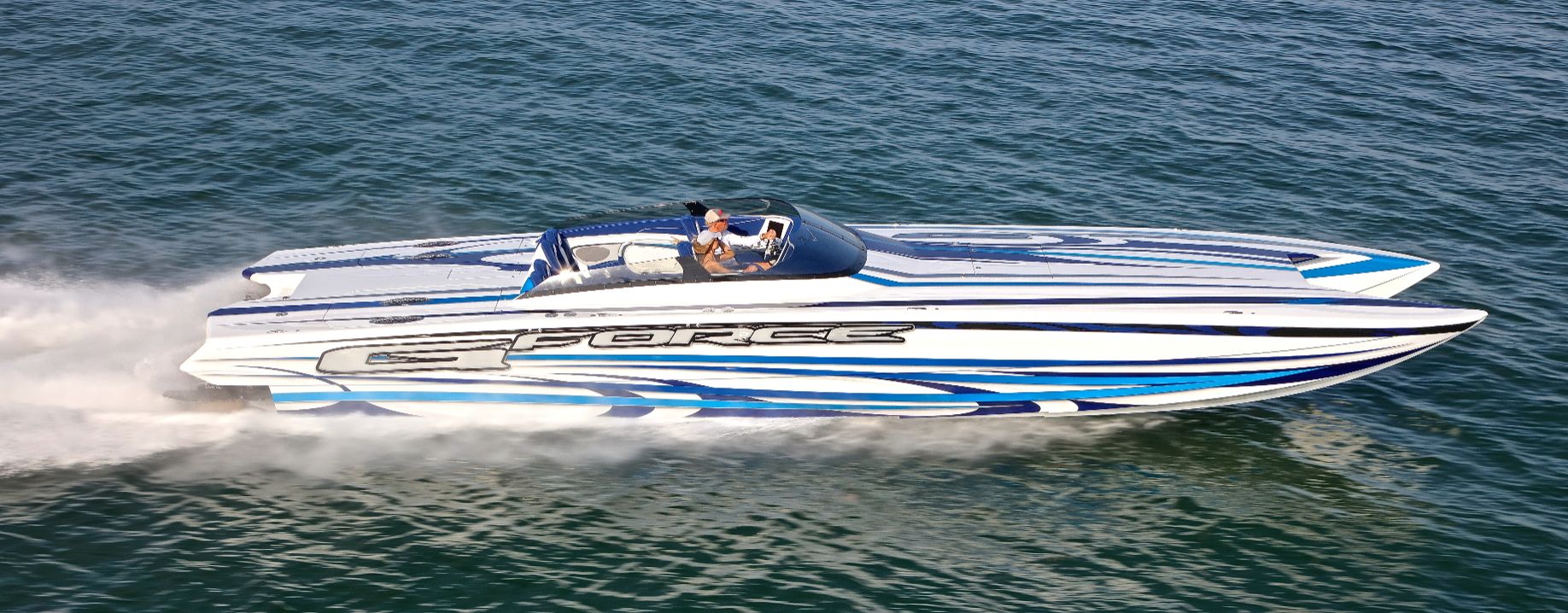
World Leaders in Design
Welcome to skater powerboats.
Those who crave tear-duct draining, cheek-smearing velocity on the water know there is only only one king: Skater! When it comes to performance, the automobile world has Ferrari and Lamborghini, while motorcyclists long to ride a Ducati or BMW.
The Number One builder of high-performance catamarans in the world has been in business for 50 years.
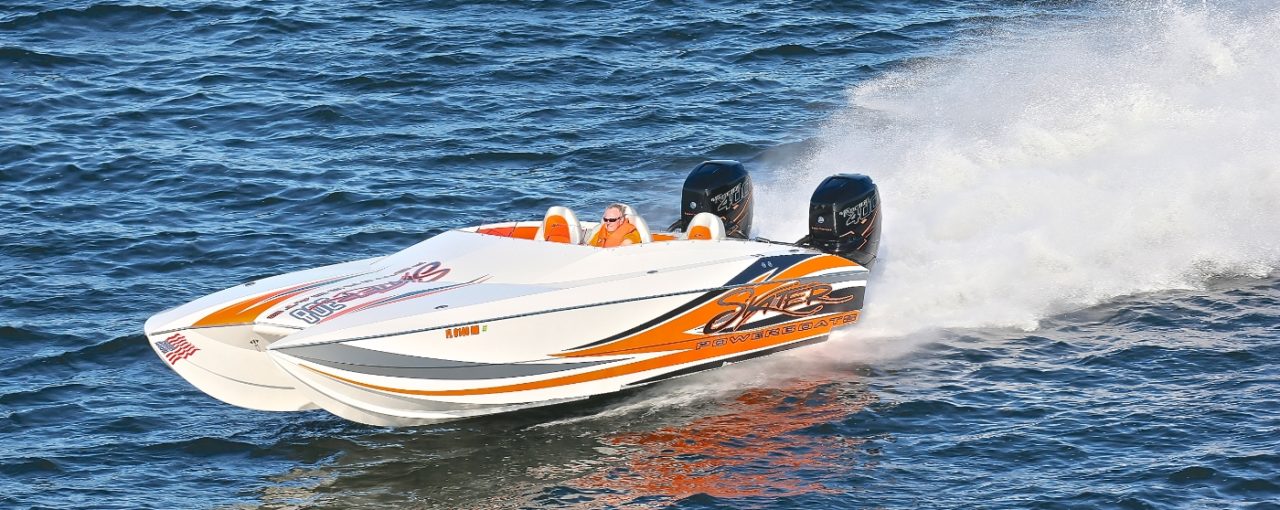
Skater is the standard by which all other high-performance boat manufacturers are compared. The sleekest in design, the fastest, and the most sought-after Skater is the Bugatti of the water.

Founded and led by Peter Hledin in 1974, Skater prides itself on being at the leading edge of technology. The Skater, Michigan-based company that covers 95,000 square feet was the first to perfect the use of vacuum-bagging technology, S-glass, kevlar, carbon fiber, epoxy resins and other construction techniques in the high performance industry and we use those construction techniques on every boat we build.

Skater does not build ‘off-the-line’ boats. From the interior to the paint to the power package and everything in between, every catamaran is fully customizable to meet each client’s needs. From subtle to spectacular in design but always stunning in performance, Skater excels above the rest.
Handling Like No Other
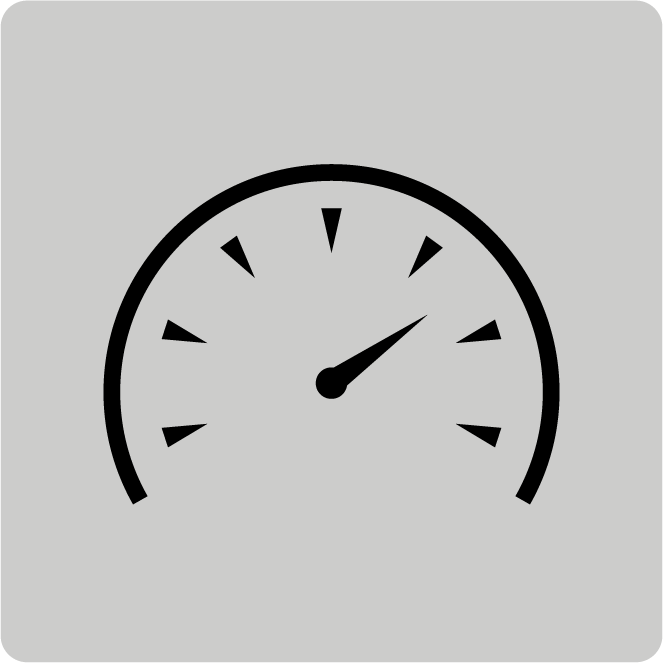
Every Skater has world-renown on-rails handling and incredible responsiveness
The Standard Bearer in the Offshore World

Even though others have tried to replicate the Skater hull countless times, we’re still the industry leader in all-around performance and speed
No Duplicates

Like human DNA, no two Skaters are the same. Each one is built to the precise standards and expectations of our clients
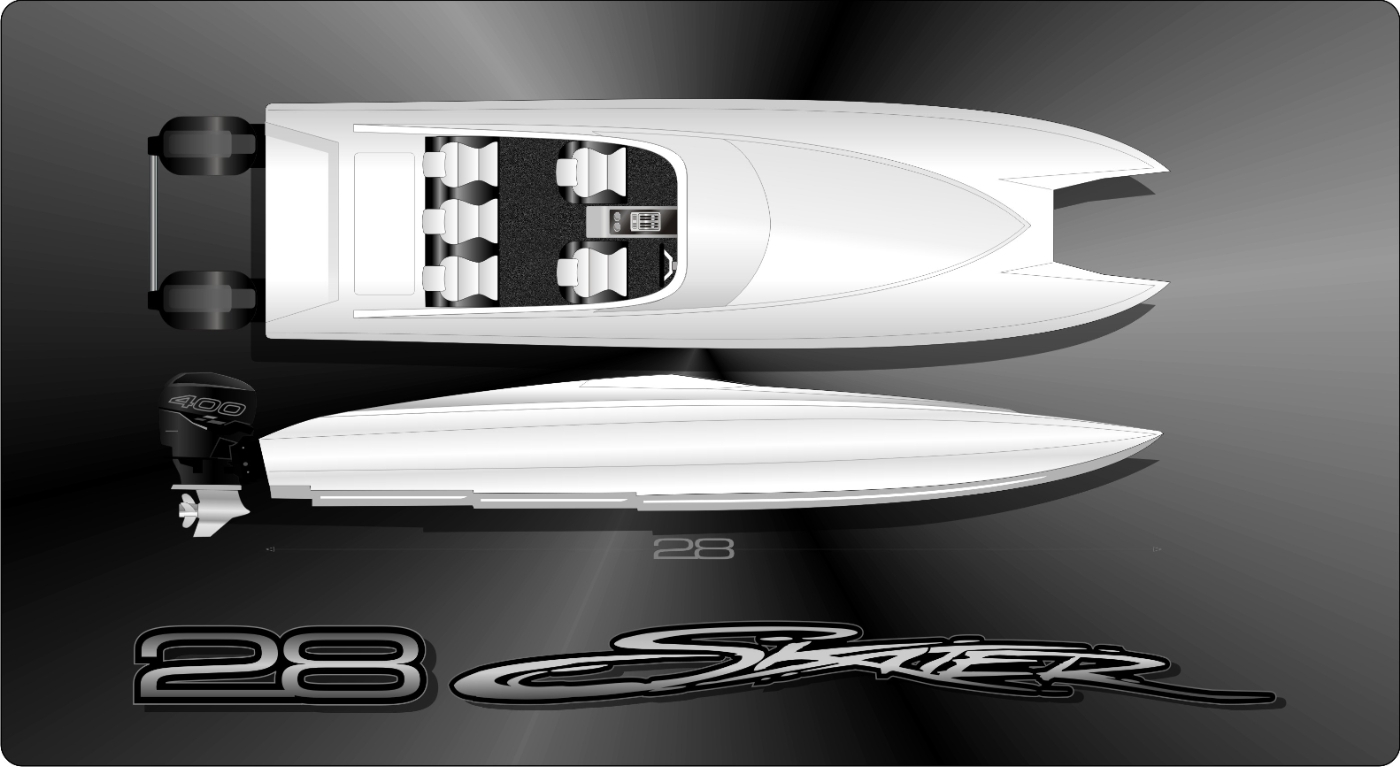
- BOAT OF THE YEAR
- Newsletters
- Sailboat Reviews
- Boating Safety
- Sailing Totem
- Charter Resources
- Destinations
- Galley Recipes
- Living Aboard
- Sails and Rigging
- Maintenance
- Best Marine Electronics & Technology
2022 Boat of the Year: Best Performance Catamaran
- By Cruising World Editors
- December 15, 2021
During and in the four days immediately following the US Sailboat show in Annapolis, Maryland, the Cruising World judges inspected and sailed on 27 boats vying for recognition. Learn more about the boats in our 2022 Boat of the Year »
OK, confession time. When the roster of nominees for the 2022 Boat of the Year awards was released, the contest’s team and judging panel couldn’t help themselves, and quietly put three check marks, little symbols of anticipation, alongside a trio of boats: the untamed cats that would vie for the title of best performer in their class. After all, both Balance and Seawind had entered the winner’s circle in previous BOTY competitions, and it was clear they’d have a serious contender for the throne in yet another player from cat-crazy South Africa, the Kinetic KC54. How’d it go? Let’s just say, nobody was disappointed. The conditions on Chesapeake Bay were ideal for putting the three nominees through their paces, and the trio of scalded cats all acquitted themselves superbly.
For 2022, if anything, the trend for flybridge catamarans is on a major upswing. New cats for 2022 from both Lagoon and Fountaine Pajot continued down that design path, putting an emphasis on living accommodations, not performance. But not aboard the latest Seawind 1600 , a brand originally built in Australia that is now produced in Vietnam. And that suits judge Tim Murphy just fine. “This boat was very dialed in,” he said, “and one place Seawind has always been innovative is with their helms. This one was really great; it was -outboard and aft with great visibility, sort of half-protected where you could step in and out. There was also good access to the boom and mainsail, which you don’t always see on cats. The deck layout was excellent, particularly the forward trampolines. Some cats have lacings with large openings where you can twist an ankle, but these were nice and tight.”
“Compared to other Seawinds that I’ve seen, I was just blown away with it in terms of what it could do and how it performed,” said Ed Sherman. “It’s a fairly conservative boat in terms of technology compared to some of the other boats in the same category, which depending on a potential buyer’s state of mind, could be either a good thing or a bad one. I loved the centralized winch aft which is where all the sail-handling takes place. It’s pretty brilliant for a short-handed crew, and it’s all in a very safe and easy-to-access location that a cruising couple can deal with without scaring the heck out of themselves.”
The Kinetic KC54 is a fresh entry in the cat universe, and we’ll let Tim Murphy get right to the point: “This is a fairly new company that was started within the past couple of years. My breath was absolutely taken away by this boat; it was spectacular. I think it was the best-built boat in the entire fleet. It’s an all-carbon boat, with a foam core, epoxy resin, all infused–fantastic. The whole boat felt integrated. You didn’t feel like there was a conflict between the forces in terms of accommodation versus performance.” With a price tag approaching $3 million, it perhaps should not be astonishing. That was a major factor in evaluating the boat, and while it did not win its class, the experts panel did present it with a Judges’ Special Recognition prize to honor the boat’s overall excellence.
“It was my personal favorite in this year’s contest,” said Sherman. The materials that were used are absolutely the highest quality available in our industry at this point, and it’s a very high-tech boat in terms of systems.” Gerry Douglas was also duly impressed: “This was the Tesla of sailboats. I think that that was their model. In terms of design and execution and technology, it hit all three of those marks. This boat is built without compromise, and what it cost was not an issue, they just wanted to do the best they could in every aspect of the boat. The construction was impeccable, the fit and finish was amazing. There are some very clever design things in the boat, but it all really worked seamlessly.”
With that level of competition, the Balance 482 had a tall order to overcome to win its class. And it did. “The sailing performance was excellent,” said Douglas. “The boat felt really good. The steering was terrific. The structure of the boat throughout was exemplary. Storage is really good. Visibility was good. Ventilation was great. There was even a rain collection system on the cabin top, which is the only one of the boats we looked at had that. It was very well concealed because the gutters formed a handhold going forward. The solar panel installation was also well done. The panels were encapsulated into a fiberglass tray that elevated the deck so the panels wouldn’t overheat. Very clever.”
The driving force behind Balance cats is Phil Berman, a world champ at racing beach cats who brought that passion to developing and marketing fully found cruisers. Judge Murphy knows him well: “Phil comes from a very strong view of wanting to see boats that have solid sailing performance. He’s also a strong proponent of daggerboard boats, which tends to be quick shorthand for the dividing line between cats that are more about payload versus cats that are about performance, but not so much where you’re going to fly a hull or break a rudder. There’s a balance within a boat that really performs that you can still live aboard.” A winning balance, it turns out, with the Balance 482 securing its position as the Best Performance Cruiser for 2022.
- More: balance catamarans , Boat of the Year , Boat of the Year 2022 , catamaran , Kinetic Catamarans , print 2022 jan , Sailboats , seawind catamarans
- More Sailboats
New to the Fleet: Pegasus Yachts 50
Balance 442 “lasai” set to debut, sailboat review: tartan 455, meet the bali 5.8, route planning in the face of climate change, how to rig everything in your favor, imtra named employee-owned company of the year.
- Digital Edition
- Customer Service
- Privacy Policy
- Email Newsletters
- Cruising World
- Sailing World
- Salt Water Sportsman
- Sport Fishing
- Wakeboarding
- Bear's Books
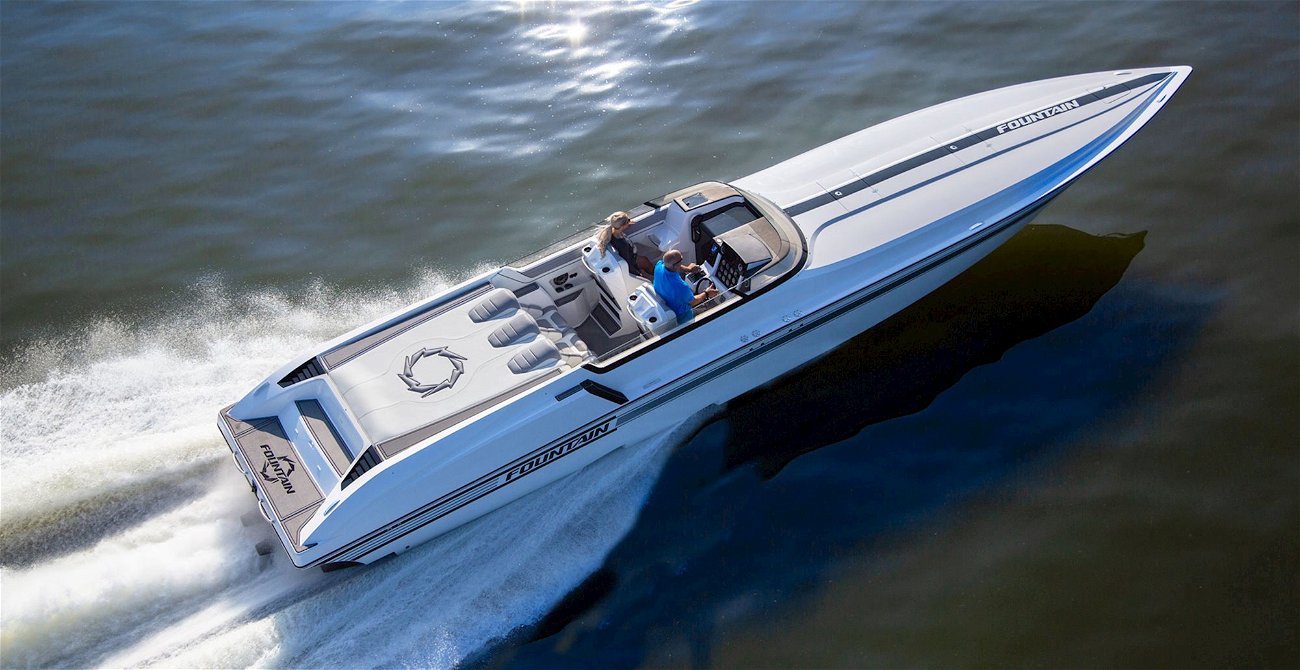
7 Fastest Speedboats of 2023
By Emily Duane
If you crave the adrenaline rush of high cruising speeds on the open water, a speedboat is the marine craft for you. According to a variety of boating authorities, the average top speed of a powerboat is 70 miles per hour (mph), with high-performance competition boats well into the 100s. The Guinness World Record holder for the fastest boat in the world is the jet-powered hydroplane Spirit of Australia, which reached an eye-watering speed of approximately 317 mph.
The speed-boat market offers multiple categories of boats designed to go fast, including V-bottom, catamaran and center-console body styles . They’re equipped with two to four motors—inboard or outboard—to provide all that power that pushes the limits on the water.
To find the best new powerboat for you, do some research and compare the specs and features of different brands and models, understanding that different engine packages and other add-ons affect the price. To start you off, here’s a list of the fastest speed boats on the market for 2023.
1. Nor-Tech 390 Sport
The 390 Sport from Nor-Tech easily lets you flirt with 80-mph speeds. This center-console boat offers stability on the water and is comfortable for everything from speedy rides to fishing and diving. The 390 Sport comes with triple or quad Mercury motors. Enthusiasts have topped 100 mph powered by quad Mercury Racing Verado 400R outboards on jack plates.
Style: Center console
Price: Starting at $700,000
Length: 39 feet
Beam: 10 feet
Weight: 12,500 pounds
Top speed: ~80 mph
Nor-Tech 390 Sport Full Specs
2. Baja Marine 36 Outlaw
To achieve high speeds without fully liquefying your insides, Baja Marine’s 36 Outlaw is an excellent option. Whether you’re taking your chances at a poker run , cruising to sand bars or treating friends to wild tubing rides, the Outlaw is here for it. Enthusiasts have hit top speeds of around 84 mph with Mercury Racing 565 engines.
Style: V-bottom
Price: Starting at $307,000
Length: 37 feet, 1 inch
Beam: 8 feet, 6 inches
Weight: 9,300 pounds
Top speed: ~84 mph
Baja Marine 36 Outlaw Full Specs
3. Mystic C4000
The dual-hull Mystic C4000 balances comfort and speed, offering a day of adventure on the water that can effortlessly go from leisurely to thrilling in seconds. Enthusiasts claim this boat is something straight out of a James Bond movie. Easy to drive and powered by just two outboard engines, the C4000 can top 100 mph, making it a shoo-in for offshore racing.
Style: Catamaran
Price: Starting at $785,000
Length: 43 feet, 10 inches
Beam: 10 feet, 11 inches
Weight: 6,800 pounds
Top speed: ~120 mph
Mystic Powerboats C4000 Full Specs
4. Donzi Marine 38 ZRC
Fast, fun and attractive, the Donzi Marine 38 ZRC experienced a revival in 2020 with its unique fighter jet windscreens and a V-bottom hull designed for speed. Buyers can choose between Mercury Racing 565 HP Bravos or staggered 860s with #6 drives to power this model. Enthusiasts have reported exceeding 120 mph in this powerboat.
Price: Starting at $560,000
Length: 38 feet, 1 inch
Beam: 8 feet, 1 inch
Weight: 11,500 pounds
Donzi Marine 38 ZRC Full Specs
5. Outerlimits SV-50
If you’re looking for the marine equivalent of a race car, the Outerlimits SV-50 is the ticket. This sleek and luxurious powerboat has room for up to five passengers and is designed for speedy thrills on the open water. Powered with Mercury Racing 1350/1100 engines, the SV-50 hit a top speed of 145 mph during a test ride in early 2023 on a mid-30-degree day in Rhode Island’s Narragansett Bay.
Price: Starting at $1.5 million
Length: 50 feet, 1 inch
Beam: 9 feet
Weight: 10,900 pounds
Top speed: ~145 mph
Outerlimits SV-50 Full Specs
6. Fountain Powerboats 42 Lightning
If you’re looking for a powerboat that offers a smooth yet forceful push to top speeds and a comfortable and stable ride once you’re there, you’ll get it in Fountain’s 42 Lightning. It goes from 0 to 30 mph in 9.5 seconds, and the only limit to top speeds is your nerve—this boat can hit 160 mph with 1,350/1,550 packages.
Price: Starting at $685,000
Length: 42 feet
Beam: 8 feet, 4 inches
Weight: 13,400 pounds
Top speed: 160+ mph
Fountain Powerboats 42 Lightning Full Specs
7. Eliminator 28 Speedster
With a name that includes the words “eliminator” and “speedster,” it should be no surprise that this catamaran zips to the top of this list with max speeds of 170 mph. Available with inboard and outboard options and a variety of deck and bow configurations, the Eliminator 28 Speedster can be customized for however you want to spend your time on the water.
Price: Starting at $300,000
Length: 28 feet, 10 inches
Weight: 4,000 pounds
Top speed: ~170 mph
Eliminator 28 Speedster Full Specs

This Picture of a Polar Bear on a Hot Day has People Upset
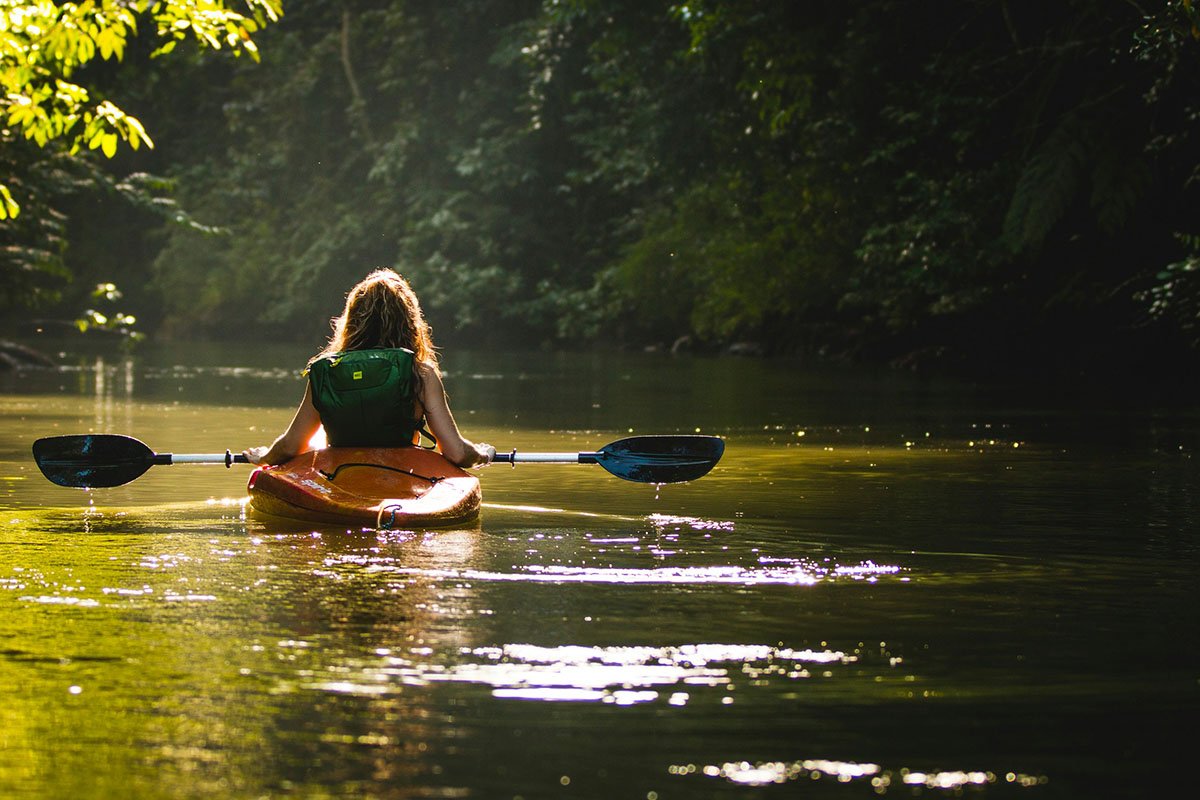
5 Best Kayaks for Beginners in 2024
Leave a comment cancel reply.
Your email address will not be published. Required fields are marked *
Save my name, email, and website in this browser for the next time I comment.
Register for newsletter (optional)
More Like This
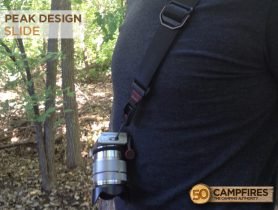
Peak Design Slide Review

Visit These 5 Incredible U.S. Forests in 2024
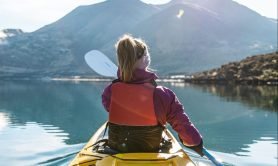
5 Tips For Cold Weather Kayaking
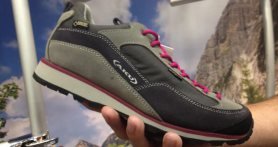
AKU Nuvola GTX Boot Overview
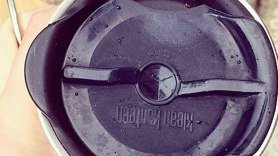
Klean Kanteen Vacuum Insulated Tumbler Overview

5 Things You Didn’t Know About Cuyahoga Valley National Park

ManCan : Picnic Kit – The ULTIMATE Refillable Growler – Review
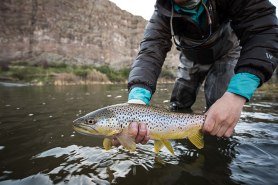
NEWS: 3 Utah Waters that Boast Incredible Fishing During March
More stories.

My Cruiser Life Magazine

Fastest Catamarans for Cruising in 2023
Catamarans appeal to sailors and would-be sailors for a variety of reasons. One of those reasons is the need for speed—cats have a reputation for being faster. There are dozens of brands and tons of great boat designs that capitalize on this, and designers are constantly pushing the bounds and asking, “Really, how fast can a catamaran go?”
Performance sailing catamarans may look like your run-of-the-mill Leopard or Lagoon from a distance. But these boats are full of little tricks to boost their speeds—narrow hull designs, retractable daggerboards instead of keels, and extensive use of cutting-edge lightweight materials like carbon fiber. All of this adds up, so expect to pay double, triple, or maybe much more for a truly fast catamaran. And that means there are far fewer boats on the water, and owning one puts you in an exclusive club.
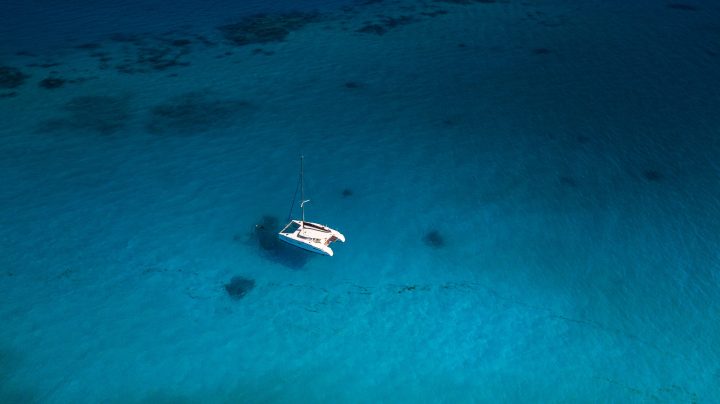
Table of Contents
Neel trimarans, what is a fast catamaran, how fast can a catamaran go, are fast catamarans the boat you’re looking for, fast catamarans faqs, top brands of fast catamarans.
Here’s a list of some of the best-known and trail-blazing fast catamaran makers. These companies are making luxury performance catamarans suited for owners who want to cruise fast. These aren’t barebones race boats built for nothing but speed. Instead, these are comfortable boats that will outperform most others in their class.
Most performance boats will be 45 feet long or more. Small catamarans don’t fall into this category, and most production liveaboard catamarans are built too heavily in order to save money.
For more than two decades, Gunboat has been setting the bar on what a performance catamaran can be. They took state-of-the-art technologies from the racing world and applied them to family-friendly cruising catamarans. The company started in the US in 2002. One of the company’s stated missions is to create boats that sail faster than the wind in anything more than 6 knots of breeze.
Since 2016, Gunboat has built top-quality boats at their La Grande-Motte, France, facility. However, they are still a boutique builder making only a handful of boats yearly. Their current offerings include the 68, 72, and 80. All boats have narrow hulls, retractable boards, high-performance sail plans, carbon fiber construction, and luxurious living accommodations.
The first hull of the Gunboat 68, CONDOR, was launched in 2019 and set out on a trans-Atlantic crossing immediately after its sea trials. The crew wrote a detailed report of the experience and the boat’s performance. CONDOR exceeded 30 knots occasionally, but average speeds were between 14 and 17 knots. Their best 24 hours saw 328 nm (an average speed of 13.7 knots).
The company motto says it all. “Life is too short to sail a slow boat.”
Outremer Catamarans is one of the original makers of French performance cats, in business since 1984. According to their website, the company has made over 300 boats since then. A large-scale production boat maker they are not. These are custom-built fast catamarans of the highest quality, made for safety, comfort, and speed. Outremer recently received much attention when popular YouTubers Sailing La Vagabonde sailed aboard an Outremer 45 for several years.
Currently, Outremer offers boats ranging from the 45 to the 5X (48 to 60 feet long). The X models (4X and 5X) are even more performance-oriented, with more extensive use of carbon fiber and a more race-inspired sail plan.
View this post on Instagram A post shared by Riley Whitelum (@riley.whitelum)
Catana is yet another French performance brand of luxury cruising catamaran. Today, Catana Group also makes Bali cruising catamarans, effectively marketing Catanas to the performance set and Bali’s to the cruising and charter set. https://www.catana.com
Presently, Catana is only making two models, the OC50 and the 53. Historically, however, Catana has made many beautiful boats. Notably, the 471 is a fast cruising catamaran that is a favorite among long-distance cruisers. On the smaller side, the 431 and even the 401 and 381 are quick and fun sailers that move better than their competition.
Catanas are easily recognizable by their daggerboards and narrow hulls with asymmetrical designs. In addition, they use a lightweight composite layup that results in a very stiff boat that weighs less than their competitors. Still, Catanas are not on the same level as an Outremer 5X or Gunboat–these are fiberglass boats that are built better than the competition and made to outperform many other boats.
HH Catamarans is Gunboat’s first real competitor in the high-end performance cat market. They started in 2012 and are part of the Hudson Yacht Group. The boats are designed by Morrelli & Melvin, a highly-regarded multihull design firm, and are built in Xiamen, China, or Cebu, Philippines.
HH has boats in their model line from 44 to 88 feet long. The company focuses on providing what owners and sailors want and are looking for, so you’ll see lots of customizability within the lineup. They include features you won’t find from a lot of builders, including lots of planned real estate for solar panels (5kW or more!), hybrid drive systems, and ocean cruising OC (keels) or sport cruising SC (daggerboard) models to pick from.
View this post on Instagram A post shared by HH Catamarans (@hh.catamarans)
Balance started in South Africa in 2013. They focus on making semi-custom, comfortable performance yachts that are strong and safe and can be easily operated single-handedly or by a couple. They are live-aboard boats that strike a balance between comfort and performance. But, compared to the current offerings from Lagoon or Leopard, it’s clear that Balance cats skew far more toward performance than others do.
Models currently range from the 442 to the 750. They’re available with daggerboards or keels and made with extensive carbon fiber and all epoxy-resin composites. According to their website, the current record speed for a Balance 482 while surfing is 28 knots. She’ll cruise all day between 8 and 14 on a reach, though. They describe the 482 as a “trend-setting circumnavigator”—the perfect boat for your sail around the world route .
Kinetic Catamarans are designed by Simonis Voogd and built in Knysna, South Africa. Like others on the list, these are semi-custom, luxury, performance cruising cats with an emphasis on speed. They have all-carbon construction, carbon spars, laminated sails, and a forward sailing cockpit deck layout.
Since they are truly semi-custom, each boat is spec-ed out to each buyer’s vision. This includes standard or racing rigs, centerboards or daggerboards, and many furnishings, layouts, and outfitting options. Kinetic currently offers 54 and 62-foot versions.
What’s better than two hulls? Three, maybe. That is, three might be better if your goal is truly fast sailing. Neel Trimarans is a new French builder attempting to capitalize on this simple fact by merging the best of all worlds—the space and liveability of a cruising catamaran with the performance, sail efficiency, and stability of an offshore-capable tri.
The company presently offers models between 43 and 65 feet. They say cruising speeds are reliably over 10 knots, with 15 to 18 knots when the breeze freshens. Compared to cats, these boats’ rigid central hulls allow for stronger rigging and better upwind performance, and the central keel allows better tracking and rudder control.
Now you’ve looked at some fast cats, you might wonder what constitutes “fast.”
You will be wowed if you’re selling your 30-foot monohull and moving up to a 50-foot cat. But if you’re coming from the world of car and plane travel, sailboats of any ilk are anything but “fast.”
The first thing to accept is that all sailboats are slow . This shocks many people who think they’d like to travel and see the world by sailboat. The marketing of these “fast cats” is everywhere, and the idea that the faster boat is safer because you can “beat the weather” is especially pervasive. No sailboat at sea can outrun a front or storm cell moving at 30 or 40 knots.
In truth, the fastest catamaran you can comfortably live aboard and cruise on will average out under 15 knots . In similar conditions, production catamarans might be doing 10 to 12. The monohull speeds of the same length might be 7 or 8 knots, and a bigger monohull with similar living space might be doing 10 or 12.
So don’t be lulled or wowed by these vessel’s maximum speed or “surfing” claims—they’re fun numbers to kick around with your dock neighbors, but what really matters is how many miles you can tick off in a day of travel.
To get more speed than this, you’ll either push the boat in ways that are not safe or comfortable at sea, or you will have to find bigger, more advanced, and even more expensive vessels. Most boats on this list are luxury liveaboard that is safe to travel the world.
But are they fast? As the old sailor saying goes, “Nothing goes to weather like a 747.” Sailing is still sailing. And sailing is a slow, slow, slow way to see the world.
Traditional monohull sailboats are displacement vessels that are limited by a few rules. As they push the water out of their way, they build up bow and stern waves. Push too much water, and the waves get bigger, pulling the vessel farther into the water. So no matter how you power it, it’s limited to hull speed. Hull speed is a factor of waterline length, width of the hull, and displacement.
Modern designs favor flat bottoms like powerboats, with the idea that they can surf and plane to get more speed. Catamarans take this even further, and with some clever design tricks , it’s possible to get a catamaran well above displacement speeds for extended runs. Of course, a lot depends on the hull type, and other factors are also at play.
Catamarans are very sensitive to weight . Their speed comes from being a lightweight boat with the ability to fly across the water, contrary to how a heavy monohull plows through it. The heavier the boat, the lower it sits in the water.
Therefore, adding weight to any catamaran will slow it down. To this end, finding a performance-oriented liveaboard catamaran less than 47 feet long is difficult. Less than this, and the narrow hulls simply can’t hold the weight of you and your stuff.
Finally, there’s the consideration of the environment you’re sailing in. The wind is obvious—they sail fastest on a broad reach. And, just like any other type of boat, they are slowest when close-hauled and on a run.
Rough seas are another of the catamaran characteristics to consider in your need for speed. Often the boat is capable of more, but the ride is rough and uncomfortable.
So you shorten sail and slow down to find the sweet spot of comfortable sailing speed—enough power to maintain a good speed without pounding your brains out and causing undo fatigue on the crew. And, of course, the rougher the conditions, the slower the boat’s performance as she slows and in the troughs and speeds “downhill.”
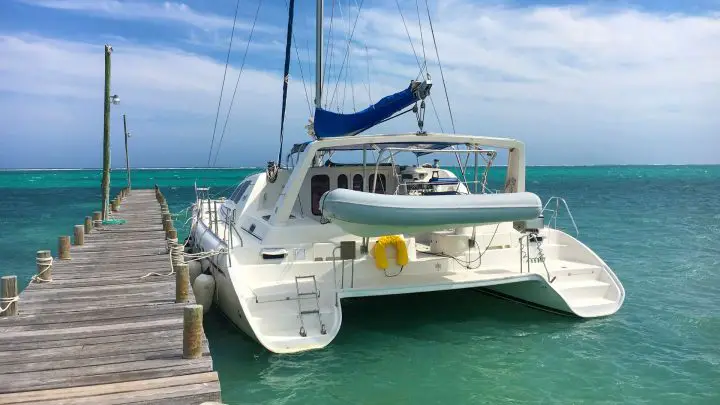
While they are faster than other vessels, that’s certainly not the only thing catamarans have going for them. Fast is a relative term, and “fast” sailing is still awfully slow. So unless you already love sailing, sailing fast might not have as much appeal as you’d expect.
Catamarans are great vessels with a lot of pluses. And these fast modern catamarans are some of the best—luxurious living space aboard comfortable, top-quality vessels.
What are the fastest catamarans?
Like those used in recent America’s Cup races, pure racing catamarans use foils to lift their hulls out of the water. Whether performance-oriented or not, regular catamarans for cruising are much slower, averaging between 10 and 15 knots. Still, they generally outperform monohull sailboats of similar lengths in most conditions, especially when sailing downwind.
How fast does a 50 foot catamaran sail?
There are many designs of catamarans, and they all sail differently. In some conditions, a pure racing catamaran may sail significantly faster than the wind speed. Most cruising catamarans, whether designated as “performance” or not, will max out around 12 to 15 knots. Momentary peak speeds may be significantly higher.
What is the fastest point of sail catamaran?
As with all sailboats, the fastest point of sail will be near a beam reach, where the apparent wind is 90 degrees from the boat’s bow. Since cats travel faster over the water, this usually means that the true wind is off the quarter, with a true wind angle of about 120 degrees off the bow.
How fast is the Gunboat 68?
Gunboat 68, hull number 1 (68-01), was launched in 2019. Immediately after sea trials, CONDOR crossed the Atlantic . The crew reported the vessel’s max speed exceeded 30 knots occasionally, with averages between 14 and 17 knots. Their best day was 328 nm, making the average speed for those 24 hours 13.7 knots (15.8 mph).
Matt has been boating around Florida for over 25 years in everything from small powerboats to large cruising catamarans. He currently lives aboard a 38-foot Cabo Rico sailboat with his wife Lucy and adventure dog Chelsea. Together, they cruise between winters in The Bahamas and summers in the Chesapeake Bay.
Leave a comment
Your email address will not be published. Required fields are marked *
Save my name, email, and website in this browser for the next time I comment.
Yachting World
- Digital Edition

Fast Bluewater Cruisers: the best new performance bluewater catamarans on the market 2018
- Toby Hodges
- August 20, 2018

Many monohull sailors who are thinking of converting to mulithulls for distance cruising seek a combination of the speed and feel of performance cruisers together with the space multihulls provide. To offer proper bluewater cruising ability yet not be too sluggish, a fast cruising cat or tri needs to be smartly designed with payload in mind and built relatively light. Here ’ s where the fast distance cruisers like Outremer, Catana, Swisscat, Seawind, Balance, Atlantic, Neel and Ocean Explorer help offer that potential sabbatical or retirement dream.
Just launched: Outremer 51

The original Outremer 51 launched in 2014 and proved popular, selling more than 50 models. It also garnered a number of European and US yacht of the year titles. But things can always improve, so the French catamaran builder has updated the design with the help of feedback from hundreds of owners. The improvements are superficial and substantial: the interior and exterior styling has been changed, but the boat’s performance has also been tweaked. Not only does this make the boat more fun, it is also “an important safety attribute”, says Outremer. With speeds in excess of 20 knots perfectly achievable, you could certainly outrun bad weather and potentially clock up 400 miles over 24 hours. This sleek-looking boat has on-trend reverse bows, curved coachroof and low-profile steering positions. The helms are slightly raised above the cockpit with a clear 360° view out over the coachroof. It may lack the real estate of a flybridge helm station, but it saves weight and allows the boom to be lower on the mast, all of which helps stability and performance. Control lines all lead back across the coachroof to winches within easy reach of the helmsman, except for the mainsheet, which runs along a track on the aft crossbeam behind the cockpit.

The saloon has comfortable seating and a table for six to eight, with a forward-looking navstation that is a good size. Accommodation is three or four cabins, depending on whether you opt for an owner’s-only hull. If you do, there’s a separate heads and shower, desk, seating and storage. Outremer makes much of the boat’s quietness, free from the grinding and cracking noises you hear as some cats flex. For liveaboards this could be a welcome feature.
First impressions
Outremer has done an impressive job of updating its most popular model, outside and in. I like the modern, muscular look of the sculpted-out topsides and dreadnought bows. Improved build techniques – partly acquired since its takeover of Gunboat – have also allowed the yard to save 600kg over the original model. The 51 has enough of a go-faster appeal for those converting from performance monohulls – the majority of Outremer’s clients, says sales manager Matthieu Rougevin-Baville – while at the same time retaining the seaworthy build and features for which the brand is known. It’s about keeping things simple, good-looking yet durable. For those with the budget, this is the ideal size of boat, in terms of speed bought by long waterline length, volume for accommodation and payload capacity (3 tonnes), for long-term, fast bluewater sailing.
At a glance…
LOA: 51ft 3in (15.65m) Beam: 24ft 4in (7.42m) Draught: 3ft 1in-7ft 7in (0.94m-2.31m) Displacement: 13.7 tonnes Price: from €735,000 Contact: Catamaran Outremer
Just launched: Ocean Explorer 60

Rubbing shoulders with Nautor’s Swan in Jakobstad, Finland, the new team behind this boat have a long track record in building low-impact yachts with high performance. And it’s not just a postcode they share with Swan – German Frers is also the designer of this yacht. The OE60 is the first in a range running to 78ft. There is carbon load-point reinforcing and an all-carbon rig for performance, with the further option of a carbon hull as well. Cutter rigged with a self-tacking jib and staysail, it has a long, sculpted bowsprit for launching downwind sails. Dual helm stations on each hull have long clear views ahead.

I wrote about this catamaran during its conception five years ago, but La Grande Motte was the first time I had seen one. Wow, talk about worth the wait… this is quite simply one of the most impressive luxury multihulls I have been aboard. Four main subcontractors to Nautor’s Swan and Baltic Yachts formed the company and the quality of their craftsmanship is, as you would expect, world class. It is the first production cat for Frers, yet the Argentinian designer has managed to maintain his reputation for alluring lines – this is a long, low and particularly elegant design. I like the helms right in the quarters, a more familiar position for monohull sailors, while the glass-based coachroof allows the helmsman a reasonable sight to the opposite bow. Step inside and it is the true panoramic view these vertical windows all combine to give that really appeals. The forward cockpit is a practical area for manning halyards or standing watch. I also like the clean, spreader-less rig and massive yet practical stowage areas. The skipper told me he had sailed a Gunboat 60 across the Pacific and that this OE60 matches its performance. A key is the C-foils, the most reliable appendage system he has used. This was the second OE60 to be built (the first has done four Atlantic and one Pacific crossing in four years) and is being used for charter. What I’d give for a week aboard this…
LOA: 60ft 7in (18.50m) Beam: 29ft 8in (9.07m) Draught: 2ft 6in-6ft 6in (0.85m-2.00m) Displacement: 18 tonnes Price: from €3.6m Contact: Frers
Just launched: Seawind 1600

The new flagship performance cruiser from the Australian brand made a welcome world debut at La Grande Motte in April. The Reichel Pugh design sits in a similar market to the Outremer 51 – a fast composite cruiser, aimed at couples going long-distance cruising. The first six 1600s sold off plans and Seawind, which owns Corsair, now builds in Vietnam. All boats are built using vinylester and Diam foam. The 1600 is Reichel Pugh’s first production multihull and has a practical air about it that sailors will appreciate. “It has been properly designed to sail fast when loaded,” says Seawind sales manager Jay Nolan. The helmsman can steer from under the solid bimini or can stand outboard, with a good view over the low coachroof. Retractable, captive daggerboards, along with foam-cored lifting rudders in cassettes, allow true shoal draught capability. The daggerboards are housed underdeck and controlled from the cockpit. The running rigging is, unusually, led under the coachroof and bridgedeck aft to a single central winch on the aft crossbeam. Reefing lines and the self-tacking jib sheet also lead to this protected, vertically mounted winch. The cockpit is smallish, linked to the interior via a huge sliding window.

I quickly took to this boat. The choice of performance monohull specialists to design a cruising cat is unusual, yet here the combination of Reichel Pugh’s reputation for winning lines and Seawind’s three decades of catamaran building experience has worked admirably. Sailors will appreciate the practical elements incorporated throughout. The design itself has particularly narrow hulls at waterline level, a low freeboard and coachroof, and the incorporation of a proper payload capacity into the light displacement. The use of captive boards and rudder cassettes allow for both sailing to windward and shoal cruising. The cassettes also create the option to replace or repair a blade easily and the low coachroof allows proper forward visibility from either helm. With the addition of larger portholes in the cabins, the 1600 gives an interesting fast cruising option for couples.
LOA: 51ft 8in (15.74m) Beam: 25ft 10in (7.90m) Draught: 8ft 6in-2ft 1in (2.6m-0.54m) Displacement: 13 tonnes Price: from €740,000 Contact: Seawind
If you enjoyed this….
Yachting World is the foremost international magazine for bluewater cruisers and offshore sailors. Every month we have practical features to help you plan and prepare to realise your sailing dreams. Build your knowledge month by month with a subscription delivered to your door – and at a discount to the cover price. S ee our latest offers now.

Cruise, Play, Stay
With all the comforts of home, arrowcat brings back the 20' center console, a unique design, understand why.
Enjoy your boat year-round and stay warm and dry during cooler weather or overnight trips, while also having a comfortable and private space to retreat for whenever you need a break. Here are a few reasons why an ArrowCat power cat is an excellent boat to consider.
A Catamaran Boat
Catamarans have two hulls, which provide more stability in the water. They are less likely to roll or pitch, which means they offer a more comfortable ride, especially in rough conditions and for people who are prone to seasickness.
Power catamarans are typically more fuel-efficient than monohull boats of the same size. It requires less energy and yields more performance per HP. The two hulls create little to no drag or resistance to get on plane, resulting in greater fuel economy. Allowing for longer journeys with fewer refueling stops.
Power catamarans have a shallow draft which means they can navigate in diverse cruising grounds – beaches, islands, rivers, channels, and coastal areas with limited water depth.
An Express Cruiser
Cabin boats are designed with comfortable sleeping quarters and living spaces. They feature a sleeping space with a bed, a galley with a stove, sink, and refrigerator, and a head with a shower and toilet.
Cabin boats provide protection from the elements, such as wind, sun, and rain. This allows for comfortable cruising in a variety of weather conditions, as well as providing a haven during storms
Express cruisers are designed for efficient and fast navigation, offering higher speeds compared to traditional cruising boats. They usually have powerful engines that enable them to cover long distances quickly, making them ideal for day trips or weekend getaways.
Powered By Outboard Motors
Outboard motors can provide excellent performance and speed. They can often reach higher speeds than inboard motors of the same horsepower.
Outboard motors have a simple and standard design and are relatively easy to install, they do not require additional components such as a transmission, propeller shaft, couplings, and struts, that inboard engines do. They are easily assessable and cost less to maintain than inboard motors because they are mounted outside at the rear of the boat.
Outboard motors are often designed with features that make them easy to maneuver. For example, they can be tilted or rotated to provide precise control and handling in tight spaces and shallower waters.

ArrowCat Power Catamarans
The outboard powered express cruising catamaran.
ArrowCat Express Cruisers are designed from the ground up to maximize comfort, performance, durability, and fuel efficiency, making them a better choice for both in-shore and off-shore family cruising. We build our powercats with your safety and enjoyment in mind, designing our signature interior cabin so that you’re not limited by the outside elements, but rather have the ability to enjoy your vessel at any given time, regardless of weather or location. Superior construction, optimized performance, economy, and safety can be found in every ArrowCat we make.
Explore Our 32' & 42' Signature Cabin Models
Perfect for offshore and inshore cruising, long distance and overnight trips, cold off seasons and hot boating seasons, and much more. The ArrowCat 32-foot and 42-foot models provide an exciting and versatile experience on the water. Explore to see which one could best suit your boating lifestyle.

ArrowCat 320 Coupe
Express Cruiser Catamaran Hull Planing Hull Design Twin Outboard Motors Standard Layout: 2 Cabins/ 1 Wet Head Trailerable Optional Tower Upgrade LOA: 31′ 2″/9.50 meters Beam: 10’/3.05 meters Draft: 20″/.508 meters
ArrowCat 420 Coupe
Express Cruiser Yacht Catamaran Hull Planing Hull Design Twin Outboard Motors Standard Layout: 2 Cabins/ 1 Full Head LOA: 41′ 9″/12.73 meters Beam: 14′ 9″/4.5 meters Draft: 18″/.46 meters
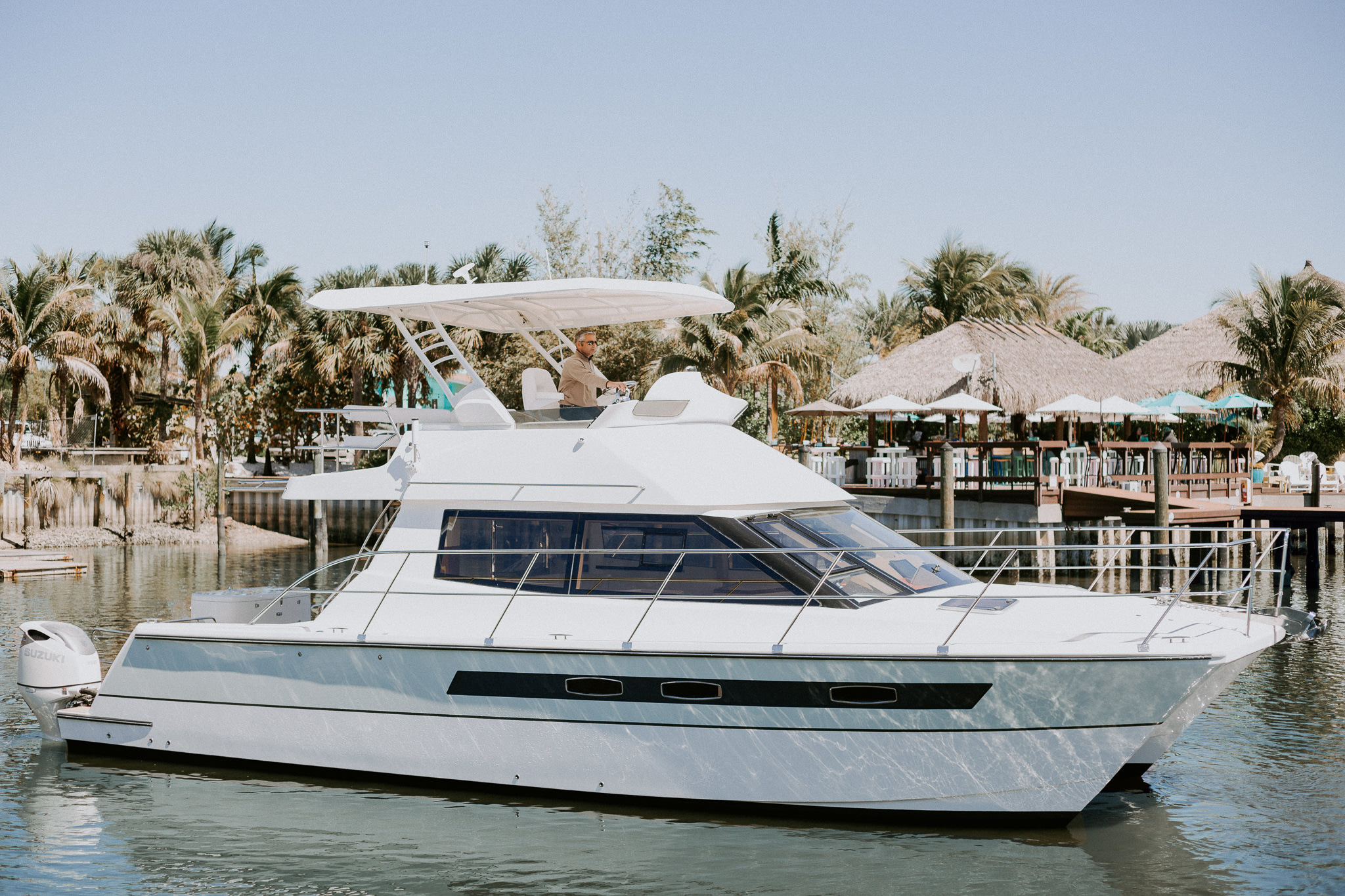
ArrowCat 420 Flybridge
Express Cruiser Yacht Catamaran Hull Planing Hull Design Twin Outboard Motors Standard Layout: 2 Cabins/ 1 Full Head LOA: 41′ 9″/12.78 meters Beam: 14′ 9″/4.5 meters Draft: 20″/.5 meters
Smooth, Fast, And Stable Ride
Talk To One Of Our Sales Experts To Schedule A Sea Trial & Experience The Feel For Yourself
Privacy Policy

Service Locator
- Angler Endorsement
- Boat Towing Coverage
- Mechanical Breakdown
- Insurance Requirements in Mexico
- Agreed Hull Value
- Actual Cash Value
- Liability Only
- Insurance Payment Options
- Claims Information
- Towing Service Agreement
- Membership Plans
- Boat Show Tickets
- BoatUS Boats For Sale
- Membership Payment Options
- Consumer Affairs
- Boat Documentation Requirements
- Installation Instructions
- Shipping & Handling Information
- Contact Boat Lettering
- End User Agreement
- Frequently Asked Questions
- Vessel Documentation
- BoatUS Foundation
- Government Affairs
- Powercruisers
- Buying & Selling Advice
- Maintenance
- Tow Vehicles
- Make & Create
- Makeovers & Refitting
- Accessories
- Electronics
- Skills, Tips, Tools
- Spring Preparation
- Winterization
- Boaters’ Rights
- Environment & Clean Water
- Boat Safety
- Navigational Hazards
- Personal Safety
- Batteries & Onboard Power
- Motors, Engines, Propulsion
- Best Day on the Water
- Books & Movies
- Communication & Etiquette
- Contests & Sweepstakes
- Colleges & Tech Schools
- Food, Drink, Entertainment
- New To Boating
- Travel & Destinations
- Watersports
- Anchors & Anchoring
- Boat Handling
- ← Seamanship
The Planing Power Catamaran: A Different Kind Of Cat
Advertisement
Planing powercats deliver the high speeds dayboaters and weekend anglers crave — but without so much pounding in choppy seas.
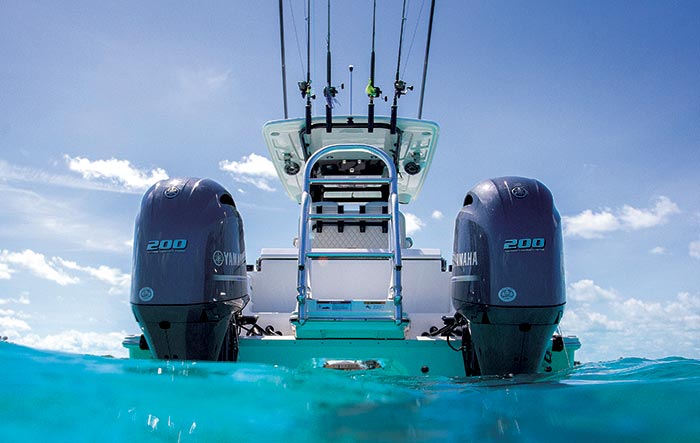
The air cushion created between the two hulls dramatically reduces wave impact at running speeds. (Photo: World Cat)
Powercats are different beasts than sailing cats, and the powercats you're most likely to see on your local waters are those in the 20- to 40-foot range (like my 22-foot Glacier Bay). Unlike the big cruising powercats, which are more like cat trawlers with top ends maybe a little over 20 mph, smaller cats have planing hulls that perform much like today's modern powerboats.
Depending on the engine package, there are a few cats that top out in the lower 30s, lots in the lower 40s, some in the 50s, and a few that break 70 or even 80 mph.
While a similar length monohull may have a 40-mph cruising speed in a 2-foot chop, the monohull captain will pull back the throttles and cruise at 30 to avoid being beaten up. The cat guy, on the other hand, may be able to keep on doing 40 thanks to the smoother ride. But having two hulls underfoot does create some interesting similarities in how these different types of boats react to input from the helm. So you'll see a few of the tips here mirror those used for sailing or cruising catamarans. Whatever type of cat you may be captaining, remember the following:
- Center the wheel and use only the throttles to control the boat. Powercats have their engines exceptionally widely spaced apart, and are far more responsive than monohulls when steered via throttles. Generally speaking, turning the steering wheel will only serve to reduce the effectiveness of working the throttles. This, of course, is assuming you have two engines. There are a few rare cats with one engine.
- At identical rpm, the engine in forward will create more thrust than the engine in reverse. So even if the throttles are set evenly when opposed, the boat will likely slide forward a bit as opposed to spinning in its own length. As a result, when attempting to speed up the maneuver it's usually best to favor giving the reversed engine extra oomph as opposed to the one in forward (assuming you don't want to move forward while turning the boat).
- Check the speed and direction of the wind before docking , and remember that some cats, particularly those with low draft, can be blown around more easily than many monohulls as there may be less hull below the waterline.
- When docking in a new slip for the first time with lines that haven't been preset, bear in mind that once you're docked, securing the boat can be difficult in some situations because few powercats have centered cleats. Most will have a single cleat on either side, in some cases obstructed by a bow rail and/or pulpit, which can make crossing lines difficult.
- Never shut those engines down until all the lines are secured . Again, remember that many cats can get blown out of kilter faster than the average monohull, and if you don't have lines preset, it may take a moment to figure out how to best secure them. Many a captain has done a perfect docking job and then shut off the engines, only for a gust of wind to push the boat right back out of the slip before the lines can be tied. Keep those engines running until the boat is 100% secure so you can apply power, if necessary, to maintain position.
Why Two Hulls?
Like all boats, catamarans come with distinct advantages (smooth ride, draft), and areas of compromise (docking, turning). Regardless of design aesthetics, the first question is usually: Why two hulls?
Mike Myers, vice president of product development for World Cat explains: "Catamaran hulls experience little to no drag or resistance to get on plane, resulting in greater fuel economy. They have a steady rise in speed and fuel burn with little to no spikes in fuel consumption."Planing powercats have a unique trait — which many cat lovers consider the top advantage over monohulls — the impact-absorbing cushion of air created by a compression tunnel between hulls.
And when it comes to beam, catamarans' parallel hulls create reliable stability, which helps to avoid heeling and capsizing, and greatly reduces the vessel roll at rest and at trolling speeds.
"Many boats are primarily designed around comfort for the captain. This usually means anyone at the front or sides of the boat takes most of the jostling,"Myers says. "The catamaran-style hull delivers ride comfort, smoothness, load distribution, and stability."That stability draws anglers to powercats of typically 20 to 40 feet; and cruisers to sailing cats 40 to 60 feet and beyond.
— Rich Armstrong
Taming The Cat
When it comes to handling powercats in open waters, the most important thing to remember is that all boats are different. Just as you wouldn't lump the handling characteristics of all monohulls together, the same goes for powercats. But many have a few common traits to consider.
- Some powercats have relatively low buoyancy in the bow compared to monohulls, as many have very narrow hull entries . As a result, in some cases, idling into a sea can allow waves to break over the bow. Gaining some headway so the bow rises a bit and packs air into the tunnel can alleviate the issue.
- Some planing powercats will run smoother at faster speeds than slower speeds, as they compress air in the tunnel between the two hulls. In these cases, speeding up may actually provide a more comfortable ride in some sea states as compared to slowing down. Depending on your boat, its tunnel may result in other differences from the monohull that you may be familiar with. Learning about these will improve you experience.
- Some powercats display a "snap roll,"which is a very fast righting motion that can rock the boat uncomfortably, especially when drifting in a beam sea. In these cases, people who may want to drift often (such as anglers) will sometimes deploy a drift sock off the bow to reduce rocking and rolling.
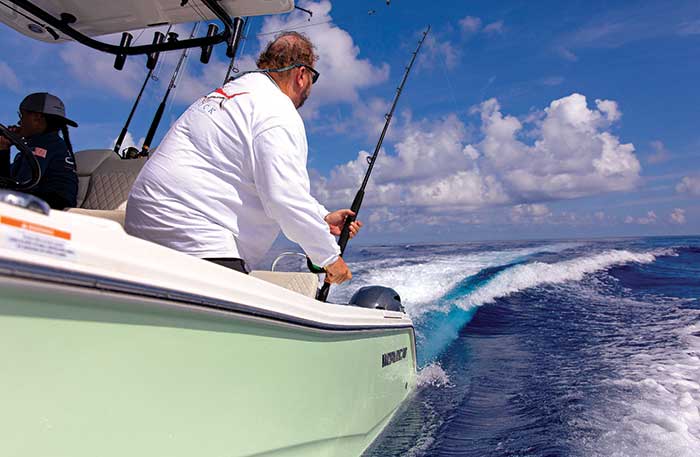
Photo: World Cat
- In general, powercats are often more weight-sensitive than monohulls, especially when the bow is loaded down . It's always best to be aware of how you're loading your boat, and if the tunnel is slapping or the bow is digging into waves, consider shifting weight aft.
- Some powercats, particularly older models, lean out in a turn rather than banking in. There's no way to eliminate this phenomenon (although trimming up an outboard engine when initiating a turn may reduce it a bit), so it's important to give passengers a warning to hold on before making any aggressive maneuvers.
- "Sneezing,"or blowing a puff of mist out the front of the tunnel that the boat then runs through (getting everyone aboard damp), is a phenomenon associated with some powercats. In many cases, trimming the bow up a bit will significantly reduce or even eliminate sneezing.
Related Articles
The truth about ceramic coatings for boats.
Our editor investigates the marketing claims of consumer-grade ceramic coatings.
Fine-Tune Your Side Scan Fishfinder
Take your side-scanning fishfinder off auto mode, and you’ll be spotting your prey from afar in no time
DIY Boat Foam Decking
Closed-cell foam flooring helps make boating more comfortable. Here’s how to install it on your vessel
Click to explore related articles
Lenny Rudow
New Boats, Fishing & Electronics Editor, BoatUS Magazine
Top tech writer and accomplished sports fisherman, BoatUS Magazine Contributing Editor Lenny Rudow has written seven practical boating books, won 30 awards from Boating Writers International — many for his marine electronics articles – and two for excellence from the Outdoor Writers Association of America. He judges the NMMA Innovation Awards, and is Angler in Chief at FishTalk, his own Chesapeake-based publication. A great teacher and inspirational writer, Lenny hosts many of BoatUS Magazine’s very-popular how-to videos, which can be found on the BoatUS YouTube channel, or at BoatUS.com
BoatUS Magazine Is A Benefit Of BoatUS Membership
Membership Benefits Include:
Subscription to the print version of BoatUS Magazine
4% back on purchases from West Marine stores or online at WestMarine.com
Discounts on fuel, transient slips, repairs and more at over 1,200 businesses
Deals on cruises, charters, car rentals, hotel stays and more…
All for only $25/year!
We use cookies to enhance your visit to our website and to improve your experience. By continuing to use our website, you’re agreeing to our cookie policy.

15 Fastest Boats In The World | 2023 Edition
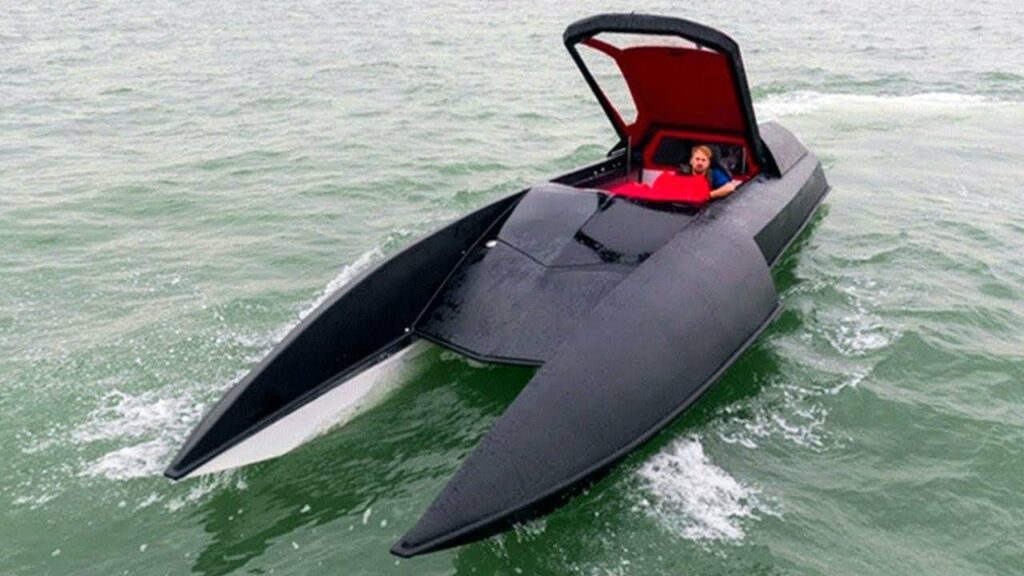
What are the world’s fastest boats? Keeping track of the world’s fastest cars is easier; when it comes to boats, things get a little more tricky. Various vessels travel on the water, varying in size, shape, and how they move. Humans have been concerned with speed since the invention of the wheel.
Also, people’s need for speed and excitement has led to the creation of speed boats that can go so fast that they almost sear the waterbed. The twenty-first century has created some of the world’s fastest boats. Most modern speed boats can reach a speed of up to 100 miles per hour, with some exceeding 170 miles per hour. Continue reading the article to learn about the 15 fastest boats in the world as of 2023. With further ado, let’s begin.
Lamborghini 63 – 69 MPH
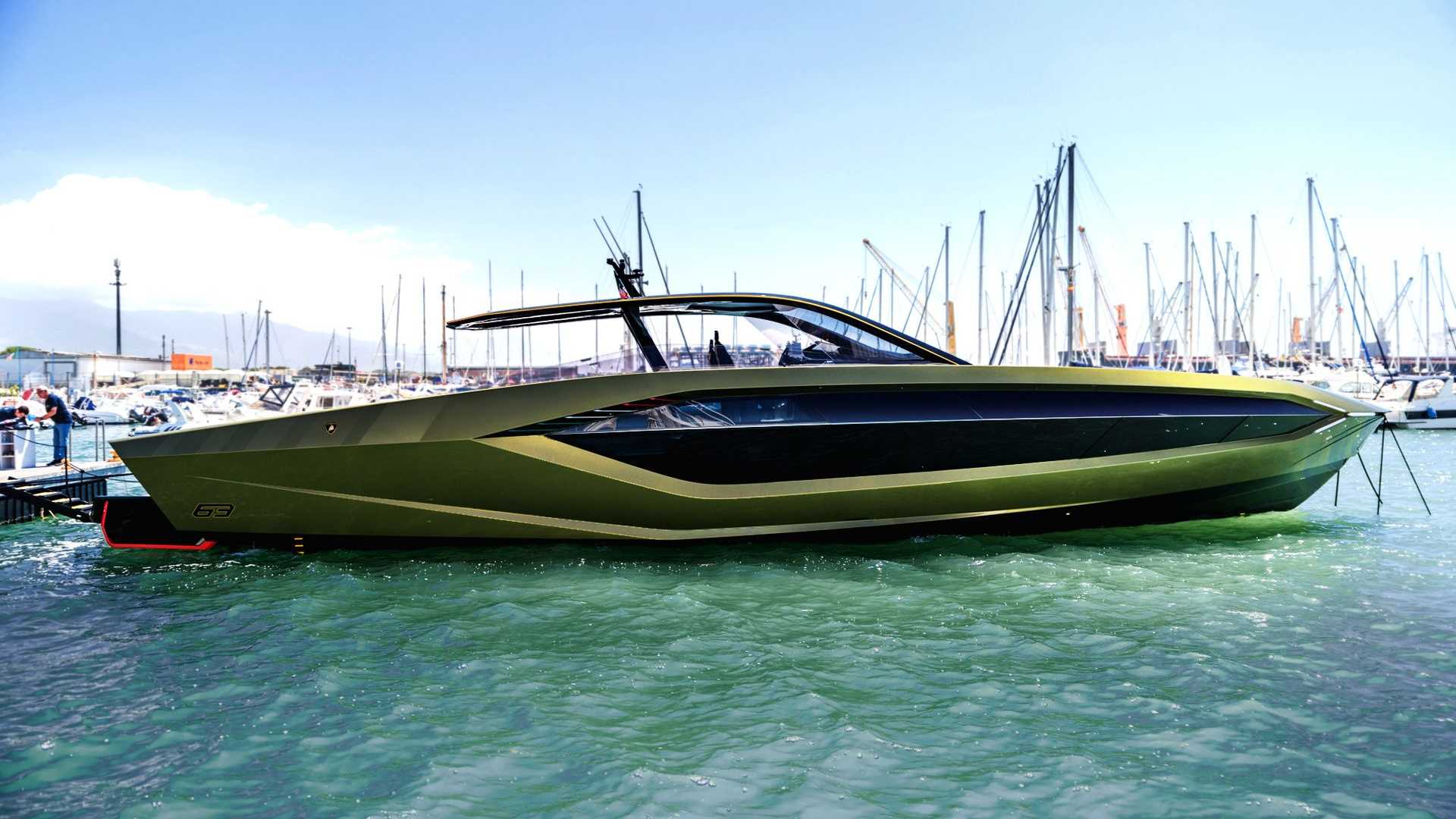
The yacht “Tecnomar for Lamborghini 63” is more than just an exercise in style and design; she also represents cutting-edge luxury speed boats. The Lamborghini 63 yacht’s advertised top speed is 60 knots, which equates to an impressive 69 miles per hour .
In the world of yachts, this is a fast boat. At cruising speed, it consumes about 100 gallons of fuel per hour, giving it a range of about 360 nautical miles.
Vestas Sailrocket 2 – 70 MPH
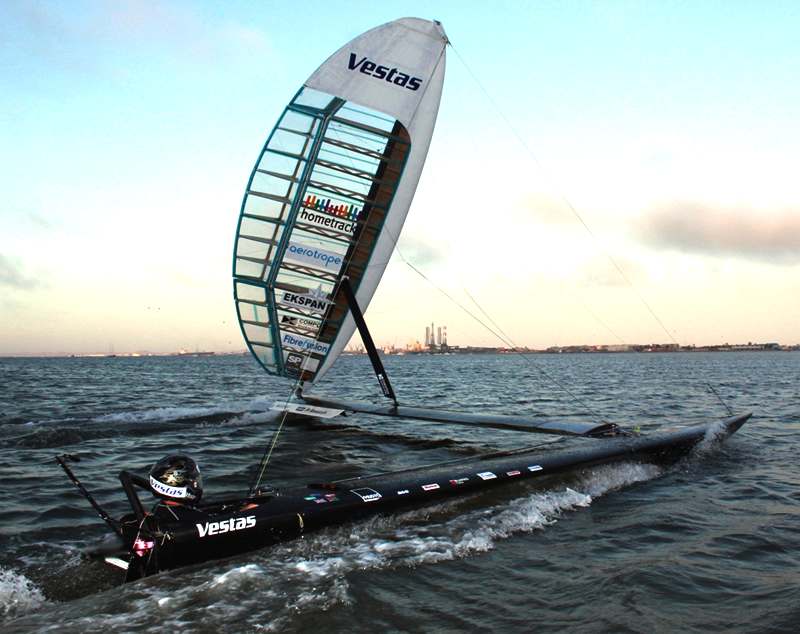
The Vestas Sailrocket 2, designed by Paul Larsen, is one of the most extraordinary and fascinating boats, setting a new world speed record of 70 mph in 2012.
The empty weight of the Vestas Sailrocket 2 is 275 kg. It measures 12.2 m long and 12.2 m wide, with a total wing area of 22 m2. The Vestas Sailrocket was made to break the B-class’s speed record for sails between 150 and 235 square feet.
HMCS Bras d’Or – 72 MPH

HMCS Bras d’Or (FHE 400) is a Canadian hydrofoil that served the military from 1968 to 1971. During sea trials in 1969, the ship exceeded 72 mph , making it the world’s fastest unarmed warship.
From 1960 to 1967, the vessel was built for the Royal Canadian Navy as part of a project to test anti-submarine warfare technology on an ocean-going hydrofoil.
Outerlimits SV-52 – 100 MPH
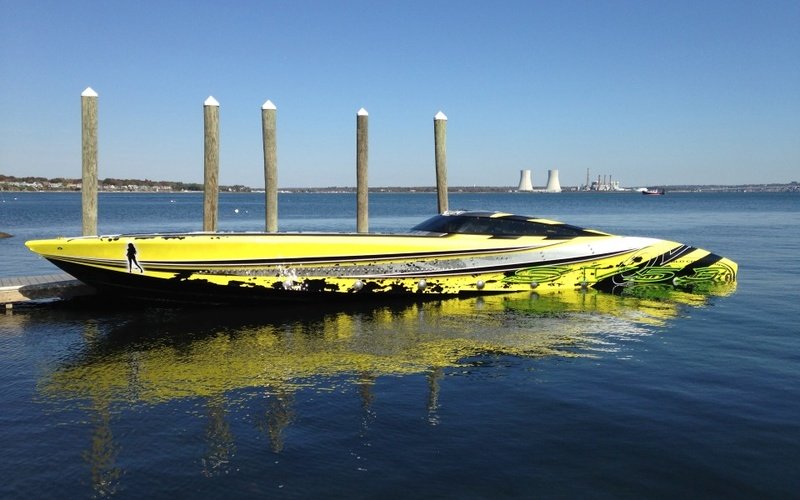
Outerlimits Power Boats has a large selection of high-speed power boats. The SV-50, SV-52, SL-44, SL-52, and even catamarans like the 43CAT and 48CAT are among their fastest boats. One of their quickest speedboats is the SV-52.
It was made to work well at high speeds and is known for its smooth ride and soft landings, even in rough and choppy waves. The cockpit features twin helm controls and a typical GPS chart plotter. Most models also have a half-cabin where you can store extra gear or get much-needed shade from the sun and sea.
This 52-foot-long beauty can reach over 100 mph in even the most severe conditions. It has a fuel capacity of 250 gallons and can comfortably seat up to four people.
South Bay 925CR – 114 MPH

The South Bay 925 CR is the fastest pontoon in the world. Brad Rowland’s South Bay 925 CR set a new world record with a speed of 114 mph.
It includes superior Garmin GPS navigation. Its length of 27 feet and beam of 8 feet make it ideal for someone who does not require a large speed boat.
The South Bay 925CR comes standard with a Manual Sport Arch, a 4-speaker Bluetooth stereo, and interior and exterior LED lighting. If you want to create the perfect party atmosphere, you can even use underwater LED lights.
Fountain 47 Lightning – 115 MPH
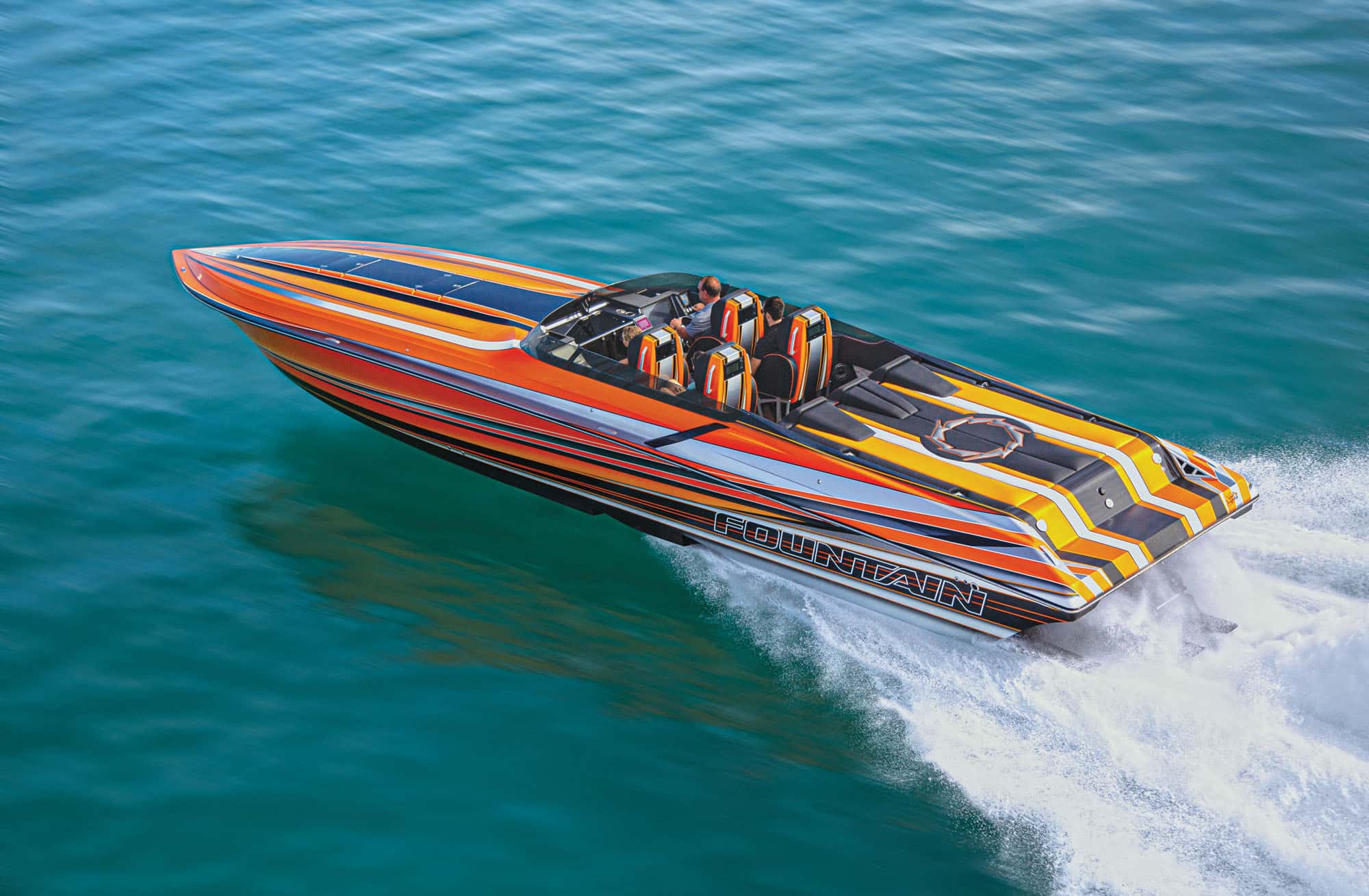
The Fountain 47 Lightning, as its name suggests, is speedy. The Fountain 47 Lightning has a top speed of 115 miles per hour . Its size is 47 feet, and it can seat up to four people. Its incredible speed is due to the twin Mercury Racing 1,075 HP engines.
The fuel tank has a capacity of 340 gallons and a Fuel Vapour Detection system. The Fountain 47 Lightning comes with a Garmin GPS, LED push-button switches on the navigation dashboard, and Vessel View instrumentation.
Cigarette Racing Team 50 AMG GTS – 135 MPH

The cigarette-shaped 50 AMG GTS is regarded as one of the world’s fastest electric speedboats. It is powered by a 2200 HP AMG electric engine, which also powers the world’s most powerful and fastest electric car, the SLS AMG Coupe Electric Drive.
This supercharged electric speedboat is powered by a lithium-ion battery with 3,456 lithium-ion cells. The powerful battery pack can store power at 400 volts and provide a maximum driving current of around 6,000 amps.
This daring speedboat has two chargers with a total charging rate of 44 kW, a full charge that takes only seven hours, and a top speed of 135 mph .
The Nor-Tech 5200 Roadster – 150 MPH
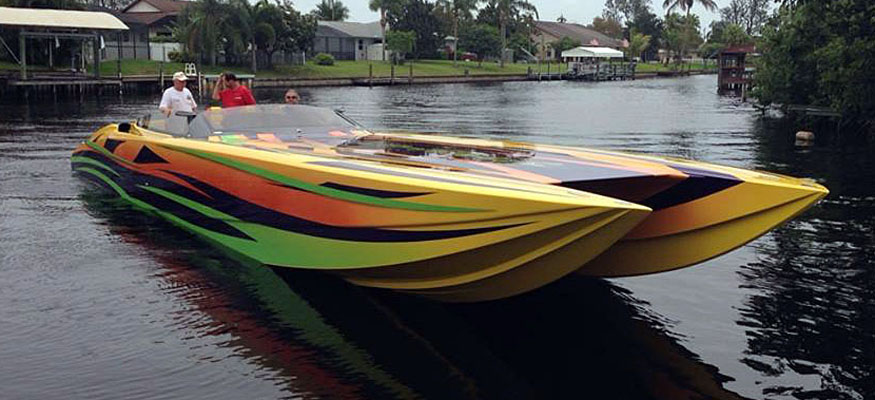
The Nor-Tech 5200 Roadster is a huge boat that can accommodate up to ten people. The 5200 Roadster may reach speeds above 150 mph . The 5200 Roadster features 5400 HP engines and a 400-gallon fuel tank, making it one of the most potent boats on the water. In addition to its unrivaled speed, the Roadster is the pinnacle of luxury boating.
A comfortable sun couch, a swimming platform with a boarding ladder, and video monitors are included. The Roadster also has a cutting-edge sound system and aft-facing seats with coolers. Nor-Tech can also provide a variety of combinations to meet our engine specifications.
Mystic Powerboats C5000 Turbine – 160 MPH

Mystic Powerboats of Florida manufactured the Mystic Powerboats C5000 turbine. Powered by two 1850 HP engines, it has a total engine power of 1850 HP and can achieve 160 mph with ease. The C5000 is believed to be one of the world’s most powerful speedboats.
The C5000 is more than 51 feet long and has technology like a GPS, plotter, navigation center, and log speedometer. The radio, CD player, and cockpit speakers are a few more features that will make your trip more fun. This ultra-quick catamaran also features cockpit air conditioning.
Skater 46 Pleasure – 165 MPH

Skater 46 Pleasure is a fast and powerful boat. The Skater 46 Pleasure has two Teague Custom 1500 HP engines. The Skater has dual fuel tanks with a full capacity of 1,000 gallons. It can easily cruise at over 100 mph for long periods and is made to land smoothly in stormy weather.
The Skater 46 Pleasure is one of the fastest motorboats available today, with top speeds of nearly 165 mph. Its roomy design may accommodate up to five people. Its clever design lets you feel the thrill of speed while still being able to sit back and enjoy the ride.
Lamborghini Aventador Super Veloce – 180 MPH

Lamborghini’s Aventador Super Veloce is a 52-foot custom-built speedboat powered by a 1550-horsepower engine capable of reaching up to 180 mph . The ship’s features include custom LED lighting and carbon fibre accents.
The speedboat has a six-person cockpit with customized buttons and dials that look like car dashboards. For example, the “Race” and “Pleasure” keys switch between the boat’s top speed and easygoing pace.
Spirit Of Qatar – 244 MPH
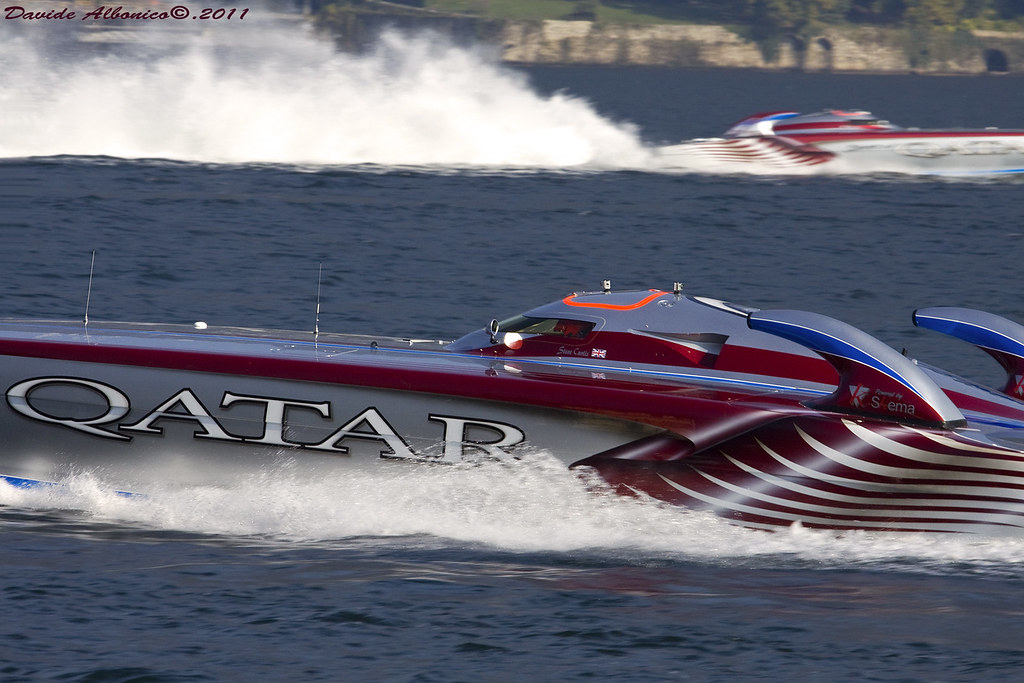
This vessel is now the world’s fastest catamaran and ranks fifth on the list of fastest boats. The Spirit of Qatar is a catamaran capable of reaching an insanely high speed of 244 miles per hour , thanks to using a pair of Lycoming turbines that together produce 9,000 horsepower (212 knots). The Spirit of Qatar, with its 50-foot length and plenty of turbine power, is a real show-stopper.
Problem Child – 262 MPH

The Problem Child is the fastest nitro drag boat in the world. Its nickname, ironically, comes from its super-fast speed capacity. Eddie Knox’s Problem Child is the world’s fastest drag boat, powered by an 8000 HP motor.
How fast can the world’s fastest boat go? It can reach up to 262 miles per hour in just 3.5 seconds. Isn’t it incredible?
The Problem Child is the ultimate water-speed machine. This speedy monster appears to fly over water and is known to leave behind a wall of water as it races through the water at speed exceeding 250 mph.
Bluebird K7 – 276 MPH

The Bluebird K7, one of the oldest and fastest hydroplanes of the twentieth century, is regarded as a speedboat pioneer. In this incredible hydroplane, Donald Campbell set records for the fastest water speeds in the 1950s and 1960s.
Between July 1955 and December 1964, he set seven-speed records. Surprisingly, the Bluebird K7 managed to reach 276 mph in 1964. Unfortunately, Campbell died in 1967 while attempting to set a speed record of 300 mph.
Between October 2000 and May 2001, the Bluebird’s wreckage was recovered. Campbell’s daughter officially presented the recovered wreckage of the Bluebird to the Ruskin Museum. The Bluebird Project is said to be conducting trials to restore the Bluebird K7 to Scottish waters.
Spirit Of Australia – 317 MPH
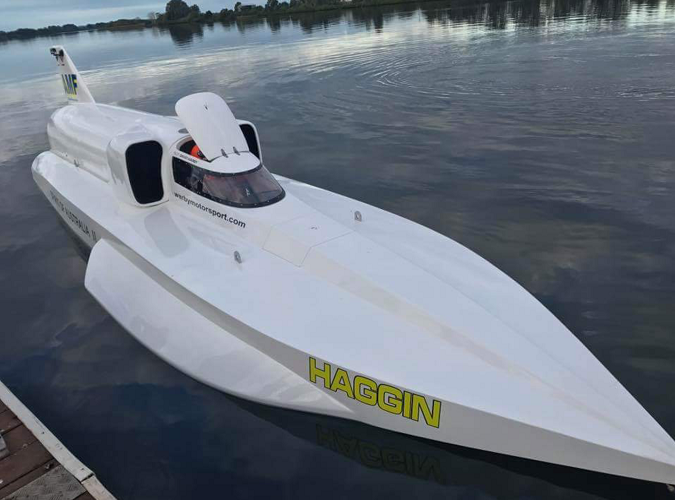
Would you believe Ken Warby built the Spirit of Australia in his backyard, which holds the world record for the fastest speed of 317.6 miles per hour ?
The wooden speedboat is powered by Westinghouse J34 jet engines, also used in planes and combat jets. The Spirit of Australia is also permanently displayed at the Australian National Maritime Museum.
Many people have tried and failed to break Warby’s world water speed record. However, Warby built the Aussie Spirit as a successor to the Spirit of Australia.
The Bottom Line
We’ve compiled a list of the fifteen fastest boats in the world, ranked by their highest miles per hour. In boats, jet and turbojet engines are mounted on a solid hull that cuts like a razor through the water. Currently, the jet-powered Spirit of Australia holds the Guinness World Record for the fastest boat in the world, clocking in at 317.6 mph.
Of these 15 fastest boats in the world, let us know which one you liked the most.
Related Posts

How a cargo ship took down Baltimore’s Key Bridge
To bridge experts, the collapse of Baltimore’s Francis Scott Key Bridge after being hit by a heavy cargo ship was as inevitable as it was devastating.
When a vessel as heavy as the Singapore-flagged Dali crashes with such force into one of the span’s supercolumns, or piers, the result is the type of catastrophic, and heartbreaking, chain reaction that took place early Tuesday.
“If the column is destroyed, basically the structure will fall down,” said Dan Frangopol, a bridge engineering and risk professor at Lehigh University in Pennsylvania who is president of the International Association for Bridge Maintenance and Safety. “It’s not possible to redistribute the loads. It was not designed for these things.”
No bridge pier could withstand being hit by a ship the size of the Dali, said Benjamin W. Schafer, a professor of civil and systems engineering at Johns Hopkins University.
“These container ships are so huge,” Schafer said. “That main span has two supports. You can’t take one away.” He called the accident “a huge infrastructure failure,” but not because of the bridge collapse; he said the shipping industry needs systems to keep a ship on track when it loses power, as the Dali did before the collision.
The bridge itself, which carried more than 30,000 vehicles daily, appeared to be structurally sound. Its condition was rated fair, according to data in the 2023 National Bridge Inventory maintained by the Federal Highway Administration. Maryland state officials said they were focused on search-and-rescue operations and did not provide later inspection data. National Transportation Safety Board Chair Jennifer Homendy said excavating detailed inspection history information — and what was done in response to any earlier findings — will be a cumbersome and protracted part of the agency’s investigation.
But bridge safety and engineering experts are emphasizing a separate issue: protective barriers.
When the span opened to traffic in 1977, many ships were smaller and the standards for protecting bridges against them were lower, they said.
A few years later, a Liberian cargo ship crashed into a bridge in Florida , sending a Greyhound bus, a pickup truck and six cars into the Tampa Bay and killing 35 people, according to the NTSB. That deadly 1980 collision helped lead to the adoption of stronger national standards for bridges, including protection from errant ships, in the years that followed, safety experts said.
Sherif El-Tawil, a professor of civil and environmental engineering at University of Michigan with expertise in bridges, said if the Key Bridge had been built after those updated standards from the American Association of State Highway and Transportation Officials were put in place, the span could still be standing.
“I believe it would have survived,” El-Tawil said.
Maryland officials did not answer questions Tuesday about what protective devices were in place near the bridge and whether they were sufficient to withstand this type of collision.
Two examples of protective measures that did not appear to have been in place, El-Tawil said, were large fenders designed to direct marine traffic away from the bridge supports and an island built around the pier.
Some states are building these kinds of protection systems around vital bridges. Last year, officials from a joint New Jersey and Delaware bridge authority announced work on eight 80-foot-wide, stone-filled cylinders designed to protect the Delaware Memorial Bridge. The existing protection for the bridge tower piers dates to 1951. “Today’s tankers and ships are bigger and faster than those of the 1950s and 1960s,” the officials said in announcing the nearly $93 million project.
State departments of transportation “are aware of the shortcomings of these bridges,” said Roberto T. Leon, a bridge and structural engineering professor at Virginia Tech. “It’s not that they don’t know. It’s a matter of prioritizing the repairs. It is a very expensive proposition to protect a bridge.”
Ian Firth, a British structural engineer and bridge designer, said he was “not surprised” at how quickly the bridge came down after it was hit. He noted that the support structure that was struck, which would have been made of reinforced concrete, was one of two main supports responsible for doing “all the work” to hold up the bridge.
He said the ship appeared to have strayed to one side before striking the bridge.
The bridge collapse, like other calamities, is probably the result of overlapping low-probability failures, said Edward Tenner, a historian and expert on disasters — akin to what happens when, by chance, the holes in a stack of Swiss cheese slices line up perfectly.
“This might have been a case where there were just an unlikely series of failures,” said Tenner, author of “Why Things Bite Back,” a book about technology and its unanticipated consequences. But he added, “I suspect there was something about the equipment of a huge ship like that, given the potential for damage like this, there should have been more redundancy. There shouldn’t have been one point of failure that could lead to a catastrophe.”
Speaking Tuesday afternoon in Baltimore, U.S. Transportation Secretary Pete Buttigieg called the accident “a unique circumstance,” adding, “I do not know of a bridge that has been constructed to withstand a direct impact from a vessel of this size.”
The ship was towed into the Patapsco River initially, but the tugboats did not accompany the ship all the way to the bridge, said John Konrad, a retired ship captain who runs the gCaptain maritime news website and co-authored a book on the Deepwater Horizon oil spill .
“The safe thing to do is keep the tugs,” Konrad said. “Moving forward, I think that’s going to happen. The Coast Guard is going to say you’ve got to keep the tugs tied up until you pass the bridge.”
In video imagery, the ship can be seen losing electrical power, then briefly regaining it before going completely dark. The ship then veers to the right, directly toward the bridge’s structural support.
The rudder may have gotten stuck in a position that caused the ship to turn, said a senior retired maritime official, who spoke on the condition of anonymity while waiting for more details on the incident. It’s also possible that an incoming tide could have been a factor, he said.
“Obviously, they could not control the ship. They could not stop the ship,” he said.
A deficiency in the Dali’s systems was discovered when the ship was inspected in June, records show. Inspectors at the port of San Antonio, Chile, discovered a problem categorized as relating to “propulsion and auxiliary machinery,” according to the Tokyo MOU, an intergovernmental shipping regulator in the Asia-Pacific region. The issue was classified in the subcategory of “Gauges, thermometers, etc,” but no additional details of the deficiency were provided. The problem was not serious enough to warrant detaining the ship, according to the records.
After a follow-up inspection later the same day, the Dali was found to have no outstanding deficiencies, the records show, indicating that the problem was addressed.
Maryland Gov. Wes Moore (D) said at a news conference Tuesday that the Dali lost power and issued an emergency call for help shortly before the freighter crashed into the bridge. The “mayday” distress call allowed officials to halt vehicle traffic headed over the bridge and saved lives, Moore said.
Erin Cox, Tom Jackman, Jon Swaine, Joyce Lee and Mark Johnson contributed to this report.
An earlier version of this article misstated the title of Edward Tenner's book. It is "Why Things Bite Back." This version has been corrected.
Baltimore bridge collapse
How it happened: Baltimore’s Francis Scott Key Bridge collapsed after being hit by a cargo ship . The container ship lost power shortly before hitting the bridge, Maryland Gov. Wes Moore (D) said. Video shows the bridge collapse in under 40 seconds.
Victims: Divers have recovered the bodies of two construction workers , officials said. They were fathers, husbands and hard workers . A mayday call from the ship prompted first responders to shut down traffic on the four-lane bridge, saving lives.
Economic impact: The collapse of the bridge severed ocean links to the Port of Baltimore, which provides about 20,000 jobs to the area . See how the collapse will disrupt the supply of cars, coal and other goods .
Rebuilding: The bridge, built in the 1970s , will probably take years and cost hundreds of millions of dollars to rebuild , experts said.

- Election 2024
- Entertainment
- Newsletters
- Photography
- Personal Finance
- AP Buyline Personal Finance
- Press Releases
- Israel-Hamas War
- Russia-Ukraine War
- Global elections
- Asia Pacific
- Latin America
- Middle East
- Election Results
- Delegate Tracker
- AP & Elections
- March Madness
- AP Top 25 Poll
- Movie reviews
- Book reviews
- Personal finance
- Financial Markets
- Business Highlights
- Financial wellness
- Artificial Intelligence
- Social Media
What we know about the Baltimore bridge collapse
A container ship lost power and rammed into a major bridge in Baltimore early Tuesday, causing it to snap and plunge into the river below. Several vehicles fell into the chilly waters, and rescuers are searching for survivors.

The Maryland Department of Transportation has requested an initial emergency relief funding of $60 million from the Biden Administration to pay for initial mobilization, operations and debris recovery from the collapse of the Francis Scott Key Bridge in Baltimore. (AP video by Nathan Ellgren)

As investigators began collecting evidence from a cargo ship that struck the Francis Scott Key Bridge, Gov. Wes Moore says the bridge will be rebuilt.

The U.S. National Transportation Safety Board released footage of the cargo ship that lost power and crashed into a bridge in Baltimore. NTSB investigators are collecting evidence from the vessel that struck the Francis Scott Key Bridge on Tuesday morning.

Baltimore’s longshoreman’s union represents the workers who load and unload the giant container ships that call on the city’s massive port. The union is working to help members who may be impacted by the port’s closure.
A container ship rests against the wreckage of the Francis Scott Key Bridge on Thursday, March 28, 2024, in Baltimore, Md. After days of searching through murky water for the workers missing after the bridge collapsed, officials are turning their attention Thursday to what promises to be a massive salvage operation. (AP Photo/Matt Rourke)
- Copy Link copied
In this image released by the National Transportation and Safety Board, a NTSB investigator is seen on the cargo vessel Dali, which struck and collapsed the Francis Scott Key Bridge, Wednesday, March 27, 2024 in Baltimore. (Peter Knudson/NTSB via AP)
A cargo ship rammed into Baltimore’s Francis Scott Key Bridge , causing the span to collapse and presumably killing six construction workers. On Wednesday, a day after the early-morning crash, officials with the National Transportation Safety Board boarded the ship and planned to recover information from its electronics and paperwork while divers searched for the bodies of workers who were still missing.
Here’s what we know so far about the collapse:
WHAT EXACTLY HAPPENED?
The operators of the Dali cargo ship issued a mayday call moments before the crash early Tuesday saying the vessel had lost power. But the 985-foot-long (300-meter-long) ship still struck one of the 1.6-mile (2.6-kilometer) bridge’s supports at 8 knots, which is roughly 9 mph (15 kph). That caused the span to break and fall into the water within seconds.
Eight construction workers were filling potholes on the bridge when the crash happened. Two were rescued soon after the collapse. Divers recovered the bodies of two others and the other four are presumed dead. Jeffrey Pritzker, executive vice president of Brawner Builders, said they were working in the middle of the span when it collapsed.
The U.S. Coast Guard said Wednesday that the ship underwent “routine engine maintenance” in the port before it lost power.
An inspection of the Dali last June at a port in Chile identified a problem with the ship’s “propulsion and auxiliary machinery,” according to Equasis, a shipping information system. The deficiency involved gauges and thermometers, but the website’s online records didn’t elaborate.
A “standard examination” conducted by the U.S. Coast Guard in New York in September didn’t identify any deficiencies, according to the Equasis data.
Given the vessel’s massive weight, it struck the bridge support with significant force, said Roberto Leon, a Virginia Tech engineering professor. The post can resist the impact by bending, Leon said, but cannot absorb the energy brought by such a “humongous ship.”
Last June, federal inspectors rated the 47-year-old bridge in fair condition. But the structure did not appear to have pier protection to withstand the crash, experts said.
“If a bridge pier without adequate protection is hit by a ship of this size, there is very little that the bridge could do,” Leon said.
Federal and state investigators have said the crash appears to have been an accident.
HOW MANY PEOPLE ARE MISSING?
Two of the construction workers who were on the bridge were rescued. The bodies of four of the six others were still missing Thursday. Searchers recovered the bodies of 35-year-old Alejandro Hernandez Fuentes and 26-year-old Dorlian Ronial Castillo Cabrera on Wednesday. They were in a pickup truck submerged in about 25 feet (7.6 meters) of water.
The workers came to the Maryland area from Guatemala, Honduras and Mexico, according to diplomats from those countries.
One worker, 38-year-old Maynor Yassir Suazo Sandoval, came to the U.S. from Honduras nearly two decades ago. His brother described him as an entrepreneurial and hard-working husband and father of two. And El Salvador’s foreign minister, Alexandra Hill Tinoco, posted Wednesday on X that one Salvadoran citizen, Miguel Luna, was among the missing workers.
The ship is owned by Singapore-based Grace Ocean Private Ltd., which said all crew members, including the two pilots, were accounted for and there were no reports of injuries.
The ship’s warning enabled authorities to limit vehicle traffic on the span. Plus, the accident occurred at 1:30 a.m., long before the busy morning rush. The bridge carried an estimated 30,800 vehicles per day on average in 2019.
WHAT IMPACT COULD THIS HAVE?
The collapse will almost surely create a logistical nightmare, shutting down ship traffic at the Port of Baltimore and snarling cargo and commuter traffic.
The port is a major East Coast hub for shipping. The bridge spans the Patapsco River, which massive cargo ships use to reach the Chesapeake Bay and then the Atlantic Ocean.
The Dali was headed from Baltimore to Colombo, Sri Lanka, and flying under a Singapore flag, according to data from Marine Traffic.
President Joe Biden said he expects the federal government to pick up the entire rebuilding cost. His administration approved $60 million in emergency federal aid to pay for debris removal and other initial costs.
“This work is not going to take hours. This work is not going to take days. This work is not going to take weeks. We have a very long road ahead of us,” Maryland Gov. Wes Moore said Thursday.
The U.S. Army Corps of Engineers and a commercial salvage company have been surveying the site as they plan the salvage operation, according to U.S. Coast Guard Chief Petty Officer Cynthia Oldham.
Coast Guard Rear Admiral Shannon Gilreath said Friday that the first goals are to reopen the shipping channel and remove the ship. The Maryland Department of Transportation and U.S. Coast Guard surveyed the damage Friday morning. Teams worked through high winds while determining how to safely cut the trusses — which weigh between 3,000 to 4,000 tons — into lighter sections that can be removed by four heavy lift cranes supplied by the U.S. Navy, according to Moore.
In the coming weeks, the governor hopes to have 10 tugboats, seven floating cranes, nine barges, eight salvage vessels and five Coast Guard boats in the water.
The collapse is not likely to have a big effect on worldwide trade because Baltimore is not a major port for container vessels, and proves more important when it comes to goods such as farm equipment and autos, said Judah Levine, head of research for global freight booking platform Freightos.
But jobs for roughly 2,400 members of the International Longshoremen’s Association Local 333 could dry up until shipping traffic resumes, according to Scott Cowan, the union’s president. Cowan said union leaders are working with elected officials to fund compensation for longshoremen in the meantime.
Authorities must also now handle a sheen in the water after some of the 56 containers onboard that were carrying hazardous materials were breached. Among the hazardous materials were corrosives, flammables and lithium ion batteries, according to the National Transportation Safety Board. But the Key Bridge Joint Information Center said Thursday that there’s no immediate environmental threat and that air monitoring has shown no volatile organic compounds. Adam Ortiz, the EPA’s regional administrator in the Mid-Atlantic states, said Friday that ongoing monitoring has not given any indication that the water contains materials hazardous to humans.
HOW OFTEN DOES THIS HAPPEN?
From 1960 to 2015, there were 35 major bridge collapses worldwide due to ship or barge collisions, with a total of 342 people killed, according to a 2018 report from the World Association for Waterborne Transport Infrastructure.
Eighteen of those collapses happened in the United States.
Among them were a 2002 incident in which a barge struck the Interstate 40 bridge over the Arkansas River at Webbers Falls, Oklahoma, sending vehicles plunging into the water. Fourteen people died and 11 were injured.
And in 2001, a tugboat and barge struck the Queen Isabella Causeway in Port Isabel, Texas, causing a section of the bridge to tumble 80 feet (24 meters) into the bay below. Eight people were killed.
This story has been updated to correct that there were more than 56 containers on the ship, but that 56 contained hazardous materials, and to correct that crews were working to cut up trusses of the collapsed bridge, not the vessel that ran into it.
Lea Skene, Brian Witte and Sarah Brumfield contributed reporting.


IMAGES
VIDEO
COMMENTS
Offshore V-Bottom Monohull Speed Boats. The offshore monohull V-bottom is still the quintessential high-performance powerboat. The boat's length dictates the waves you can take on safely and comfortably. Typically, high-performance V-bottom measures from 25 feet and up to over 50 feet.
Freeman catamarans were fast out of the gate. The original 33 hit a top end of some 55 knots with twin 350-hp outboards. Customers were sold, and demand for larger boats poured in. Freeman expanded, offering a 37 and 42, and earlier this year, the company released a 47-footer with a 13-foot, 2-inch beam.
Gunboat 68 (+35Kts) Gunboat 68 is a cruising catamaran designed to reach the highest speeds possible. Made by Gunboat, the ship uses Grand-Prix racing boats' designs to develop the speediest cruising catamaran on the market. Gunboat 68 is made entirely from carbon composites, which keeps the ship lightweight and fast.
Photo via World Cat Boats. World Cat is one of the most recognizable brands in the world of power catamarans — in fact, according to the company they're the largest producer of power catamarans in the world. Their line is a mix of center console and dual console fishing and family boats ranging from 23' to 40'.
The Aquila 36 is the first vessel in the builder's series with outboard power. Aquila Boats. The Aquila 36 is a departure from her sisterships in that she is an outboard-powered, express-cruiser-style catamaran, but she also adheres to MarineMax's philosophies.. With a single main living level from bow to stern and a beam of 14 feet 7 inches, the Aquila 36 is like a bowrider on steroids.
Imagine driving your truck up a steep hill at 50 mph in second gear while pulling a trailer. That's essentially what it's like for boat engines every time you use them. That's why catamarans are the fastest high-performance boats you can buy. A catamaran of the same length to a V-hull boat will always be faster with identical power. Always.
The Number One builder of high-performance catamarans in the world has been in business for 50 years. ... Skater is the standard by which all other high-performance boat manufacturers are compared. The sleekest in design, the fastest, and the most sought-after Skater is the Bugatti of the water. ... From the interior to the paint to the power ...
There's a balance within a boat that really performs that you can still live aboard.". A winning balance, it turns out, with the Balance 482 securing its position as the Best Performance Cruiser for 2022. With a powerful, versatile sail plan—as well as light, solid construction and go-fast daggerboards—the Balance 482 is a go-anywhere ...
Properly designed, the result is the most efficient hull, inch for inch and horsepower for horsepower, in the go-fast boat world. Where a 50-foot V-bottom from Outerlimits powered by twin 1,350-hp engines from Mercury Racing might run 145 mph, the same-size catamaran from Statement Marine with the same power package might well top 180 mph.
HH Catamarans has been turning heads since 2012 with a line of sporty, high-tech boats that feature a luxury fit-out. What started off on the drawing board as a fast 48ft cruising cat has grown to ...
Sport Catamarans Power catamarans are the fastest high-performance boats on the go-fast market. Typically fitted with twin outboards and range from 28 to 36 feet and are the go-to of the go-fast powerboat world since they are comparatively more straightforward to operate than their speedy counterparts, drawing in a less experience buying crowd.
To start you off, here's a list of the fastest speed boats on the market for 2023. 1. Nor-Tech 390 Sport. The 390 Sport from Nor-Tech easily lets you flirt with 80-mph speeds. This center-console boat offers stability on the water and is comfortable for everything from speedy rides to fishing and diving. The 390 Sport comes with triple or ...
They're all expensive—think £80,000 for an entry-level new go-fast powerboat. At the highest of the high end, something on the order of, let's say, a 50ft enclosed-cockpit, all-carbon-fibre catamaran with twin 3,000hp turbine engines and 200+ mph capability, you're looking at more than £650,000. In short, go-fast boats are not for the ...
Historically, however, Catana has made many beautiful boats. Notably, the 471 is a fast cruising catamaran that is a favorite among long-distance cruisers. On the smaller side, the 431 and even the 401 and 381 are quick and fun sailers that move better than their competition.
World's fastest outboard performance pleasure production boat ever made - MTI 440X Review Top speed and more with boating adventurers Mike and Sarah Howe of ...
Here ' s where the fast distance cruisers like Outremer, Catana, Swisscat, Seawind, Balance, Atlantic, Neel and Ocean Explorer help offer that potential sabbatical or retirement dream. Just ...
Power catamarans are typically more fuel-efficient than monohull boats of the same size. It requires less energy and yields more performance per HP. The two hulls create little to no drag or resistance to get on plane, resulting in greater fuel economy. Allowing for longer journeys with fewer refueling stops.
After testing the DCB Mach 26, the company now has earned a place in discussion of really quick catamarans. The second-fastest cat in our roundup, the Mach 26 blazed to a 121.2-mph top speed on the radar gun, more than 10 mph faster than the third-fastest Hustler 377 Talon we tested in Miami.
Power cruising multihull boats are one of the fastest-growing segments of the recreational boating market. From multihull center-consoles to mid-size catamaran cruisers, and from large high-speed sport-fishing catamarans to luxury multihull motor yachts, the advantages of multihull vessels are being appreciated by a growing audience.
This usually means anyone at the front or sides of the boat takes most of the jostling,"Myers says. "The catamaran-style hull delivers ride comfort, smoothness, load distribution, and stability."That stability draws anglers to powercats of typically 20 to 40 feet; and cruisers to sailing cats 40 to 60 feet and beyond. — Rich Armstrong.
1. Nor-Tech: 390 Sport Model - 100+ MPH. The Nor-Tech 390 Sport is renowned as the industry's fastest outboard-powered center console and it still holds strong at the top of the list in 2024. Late last year Legend Marine Group delivered the first ever 500R quad-powered 390 Sport.
Outerlimits Power Boats has a large selection of high-speed power boats. The SV-50, SV-52, SL-44, SL-52, and even catamarans like the 43CAT and 48CAT are among their fastest boats. One of their quickest speedboats is the SV-52. It was made to work well at high speeds and is known for its smooth ride and soft landings, even in rough and choppy ...
120 to 150 MPH In this speed range, buyers still have both V-bottom and catamaran options. On the V-bottom side, Cigarette Racing Team offers three models—the 39 Top Gun, the 42 Tiger and the 50 Marauder—that can fill the bill if powered by Mercury Racing 1550/1350 power-adjustable engines, or Mercury Racing 1350 engines. Though Outerlimits Offshore Powerboats also offers a host of sit ...
The container ship lost power shortly before hitting the bridge, Maryland Gov. Wes Moore (D) said. Video shows the bridge collapse in under 40 seconds. Victims: Divers have recovered the bodies of ...
A cargo ship rammed into Baltimore's Francis Scott Key Bridge, causing the span to collapse and presumably killing six construction workers.On Wednesday, a day after the early-morning crash, officials with the National Transportation Safety Board boarded the ship and planned to recover information from its electronics and paperwork while divers searched for the bodies of workers who were ...